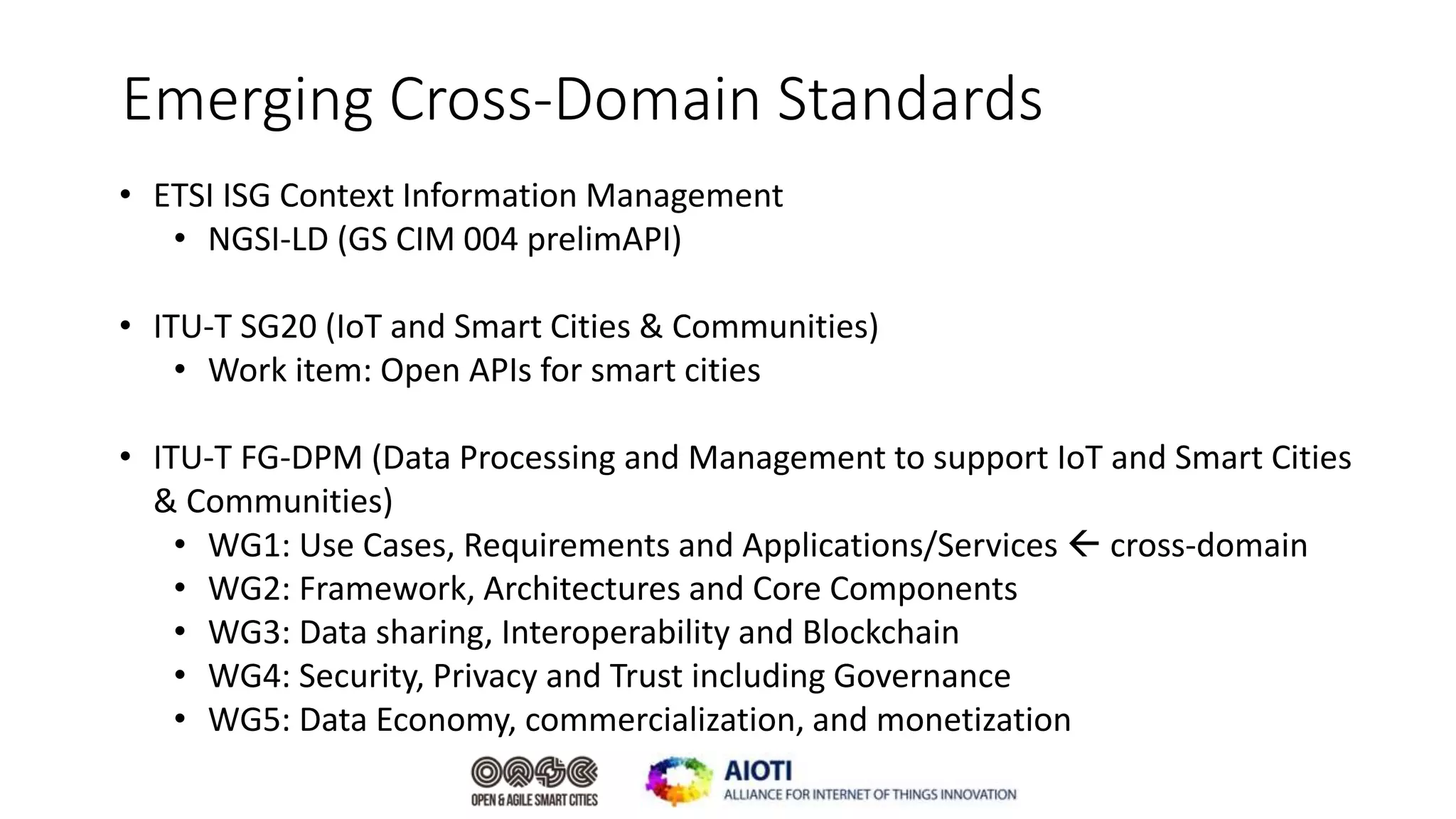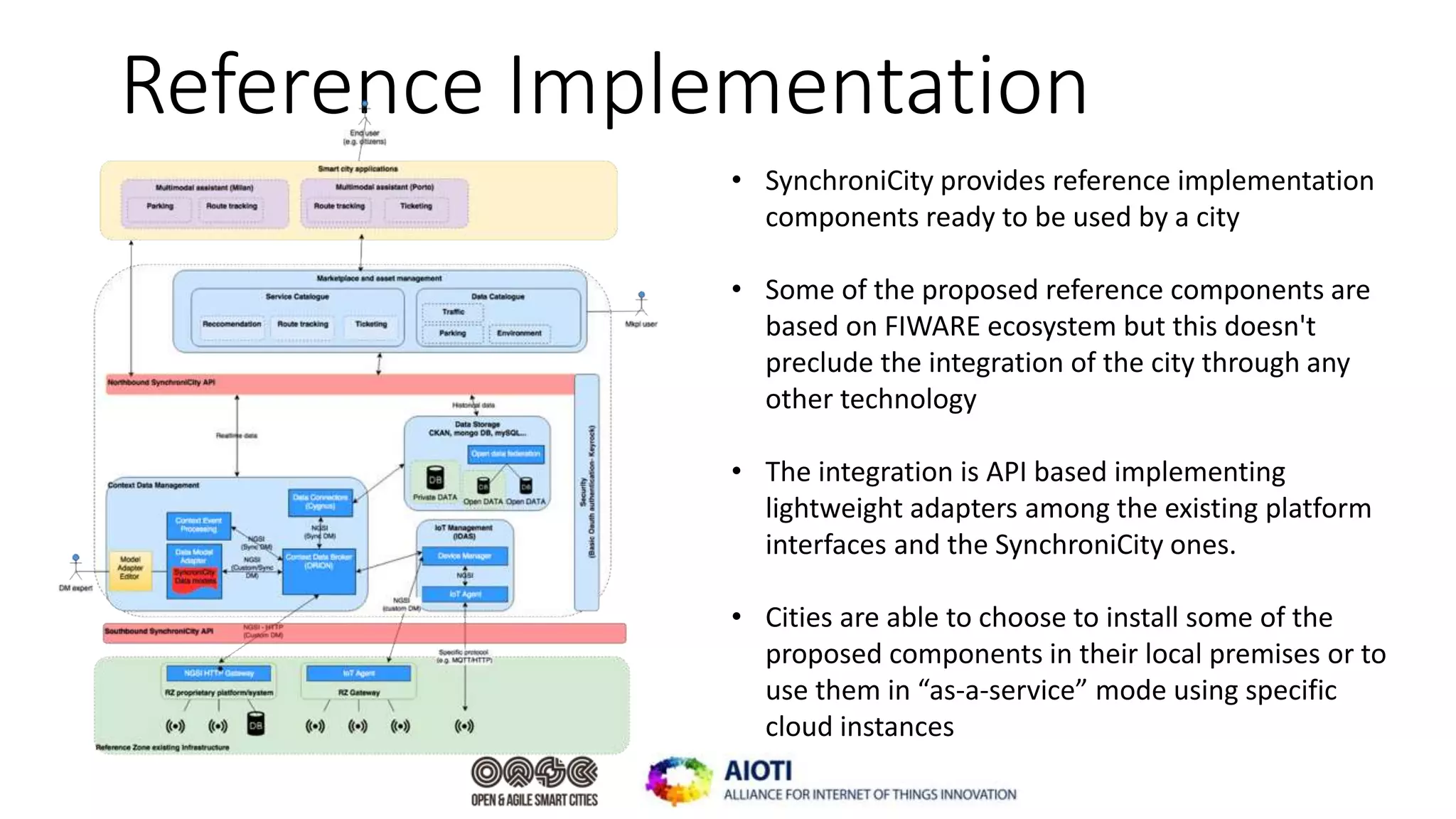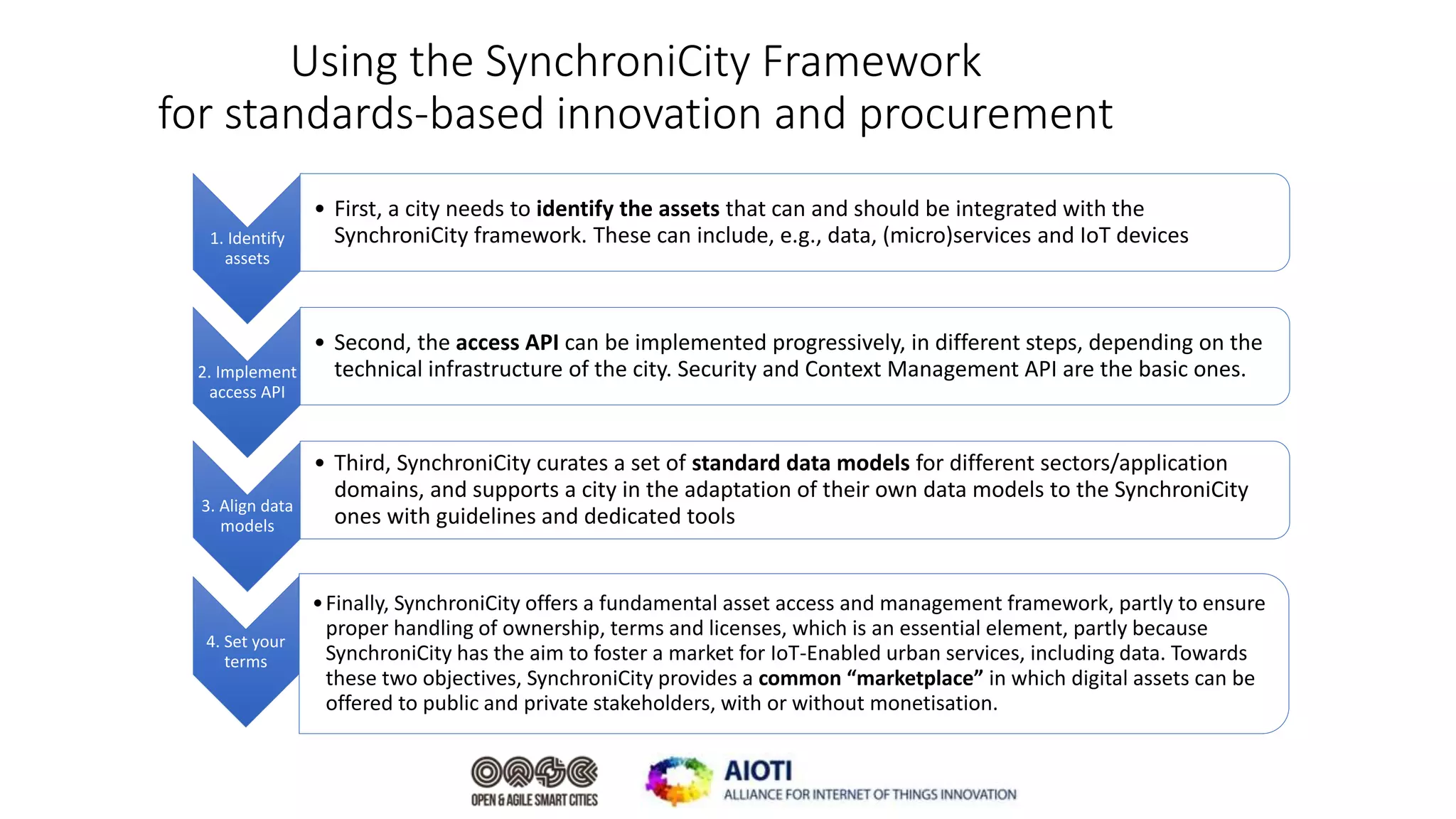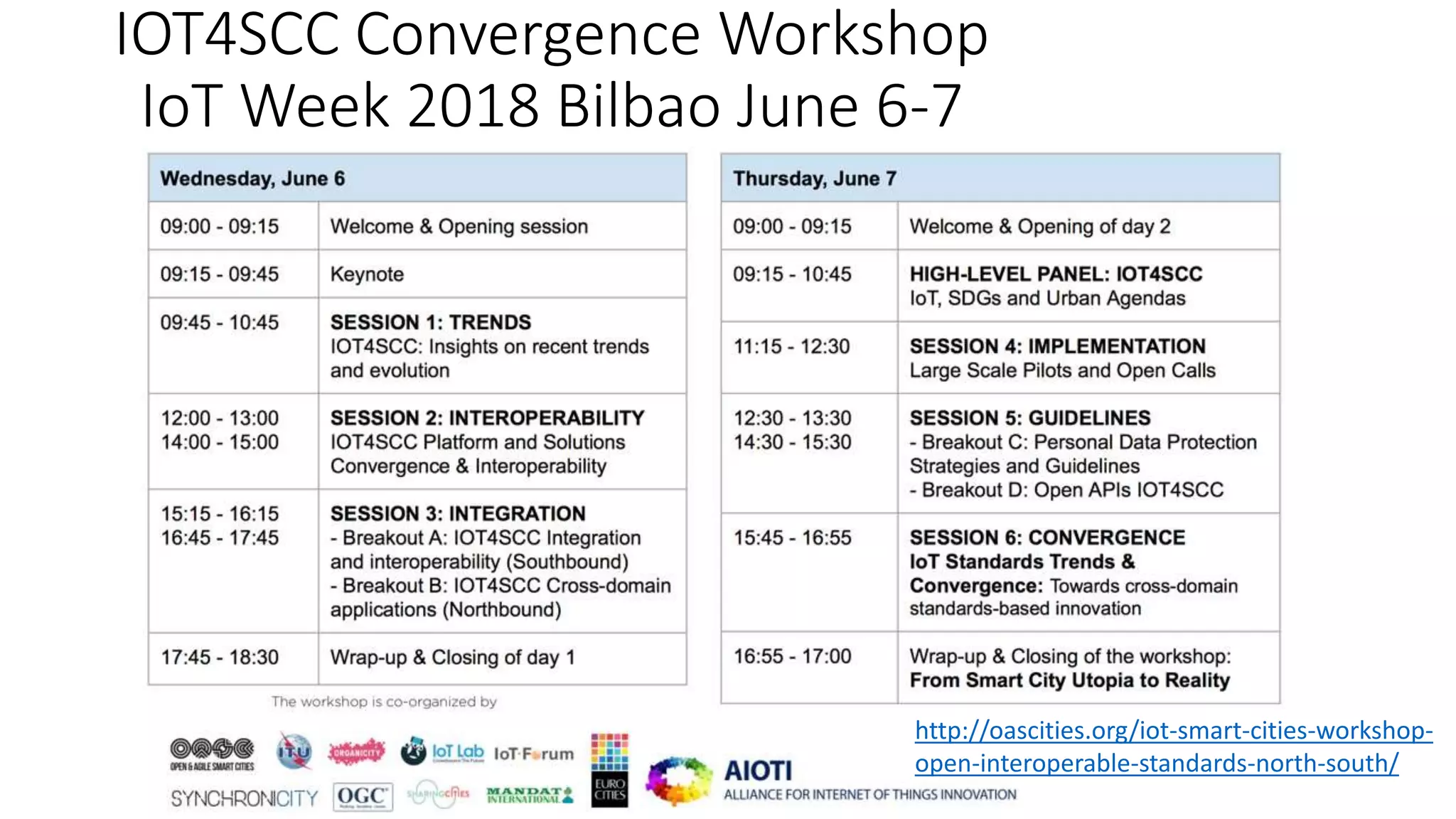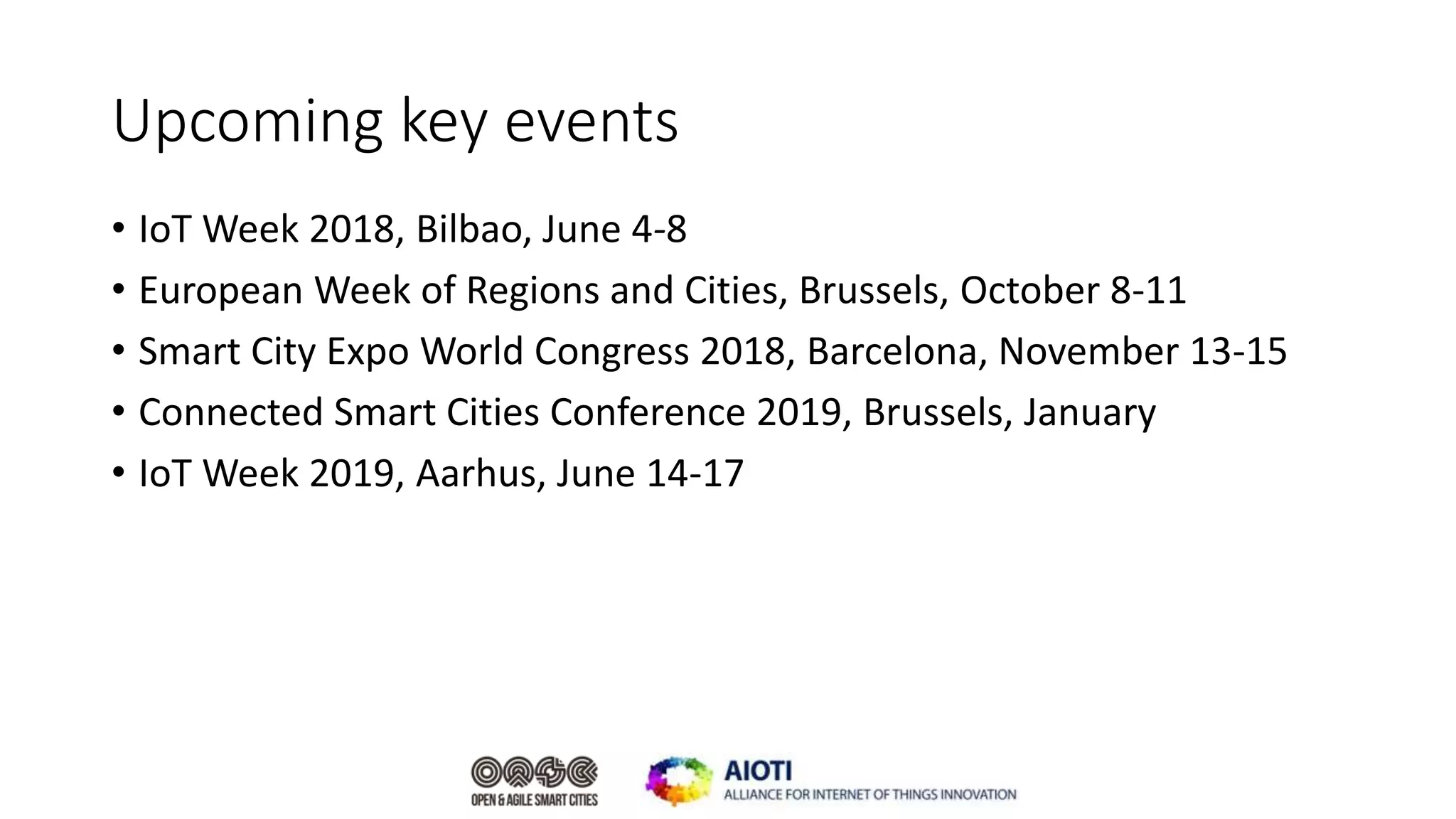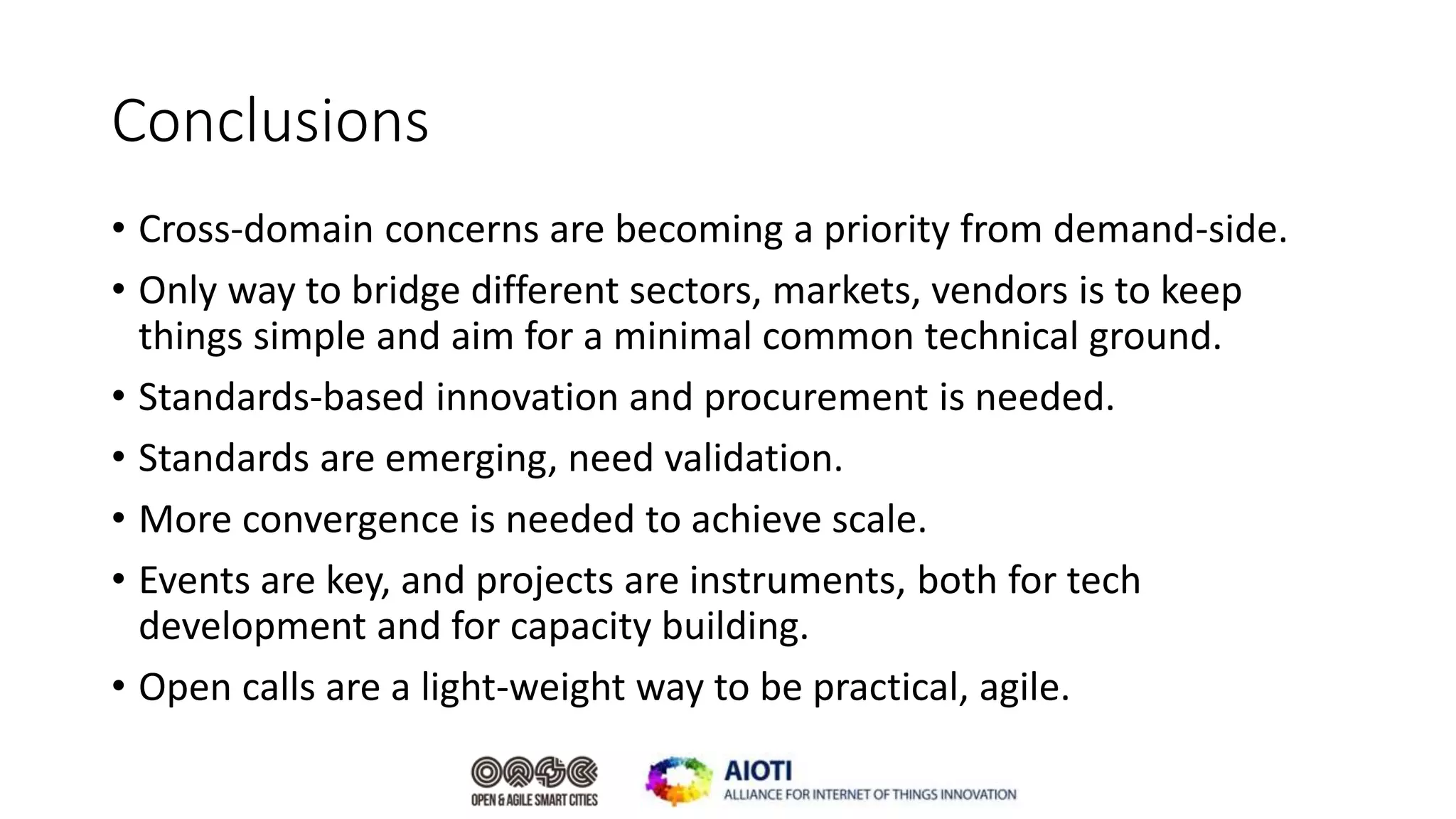The document discusses the innovation and integration of IoT in smart cities, emphasizing the emergence of commercially viable cross-domain use cases that can drive horizontalization. It highlights the importance of standardization, data sharing, and the careful selection of connectivity solutions while promoting collaboration among cities to replicate successful projects. The necessity for a clear business case and sustainable funding models for IoT initiatives is also addressed, alongside best practices for achieving interoperability across different platforms and domains.
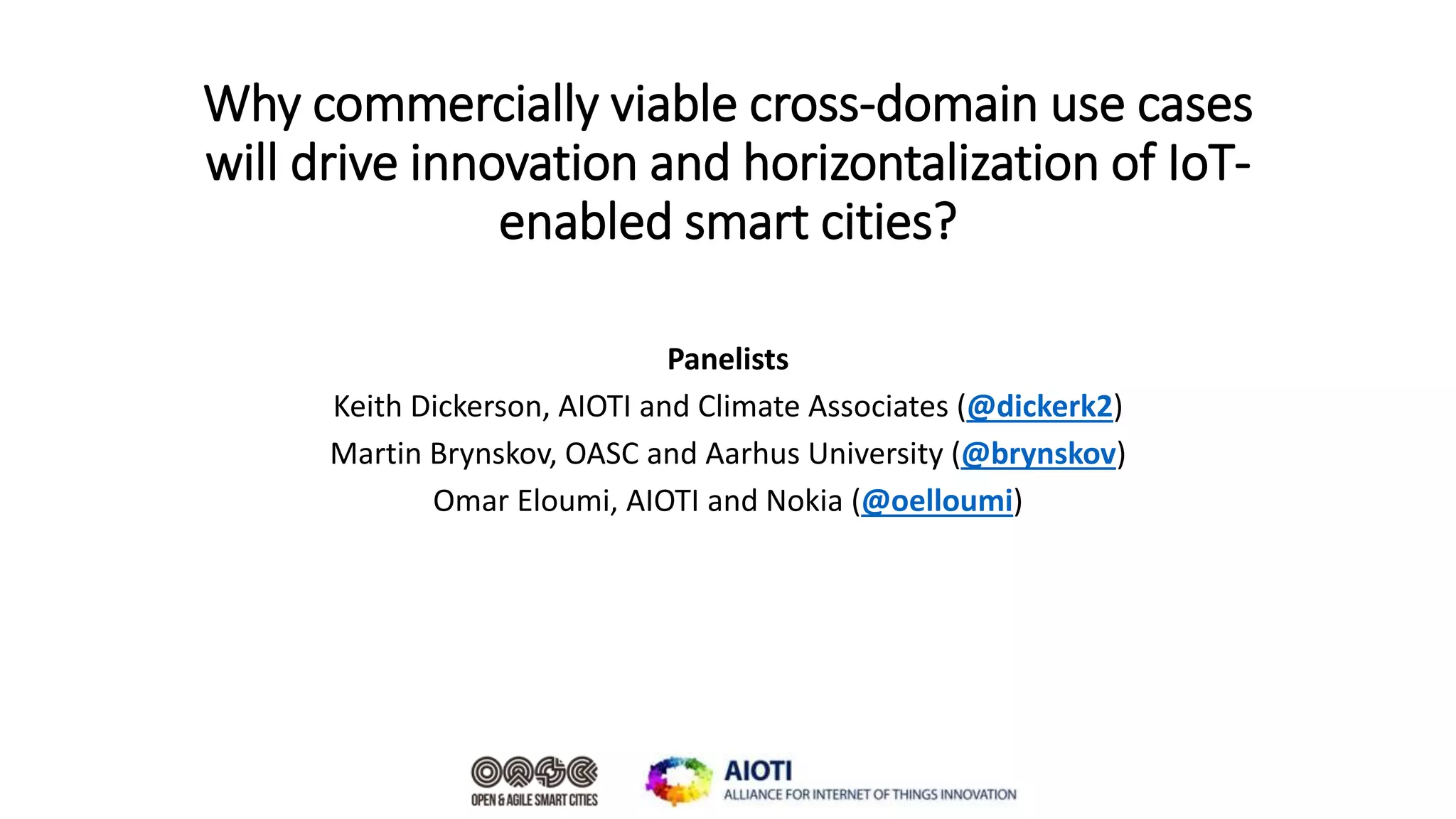
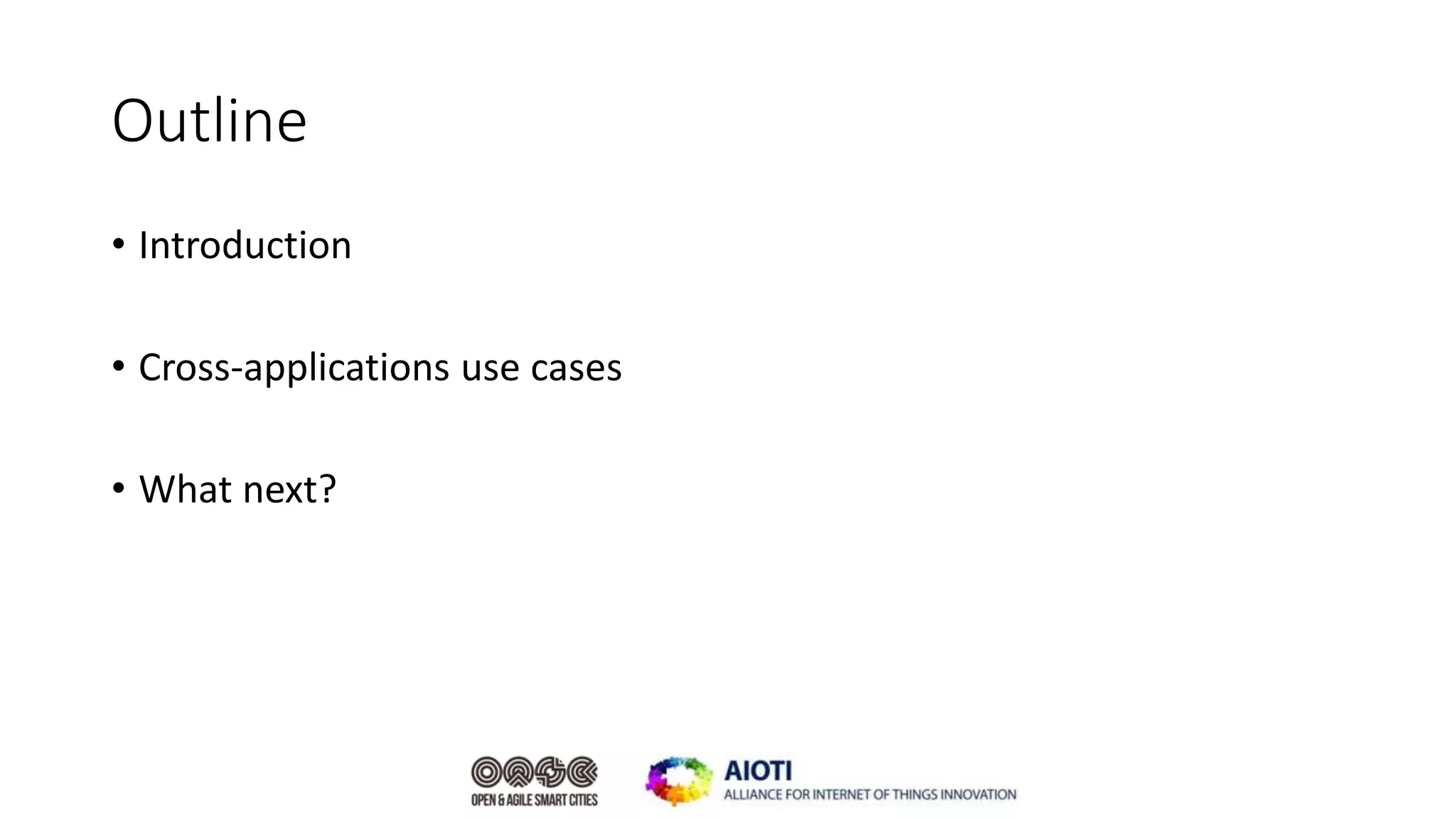
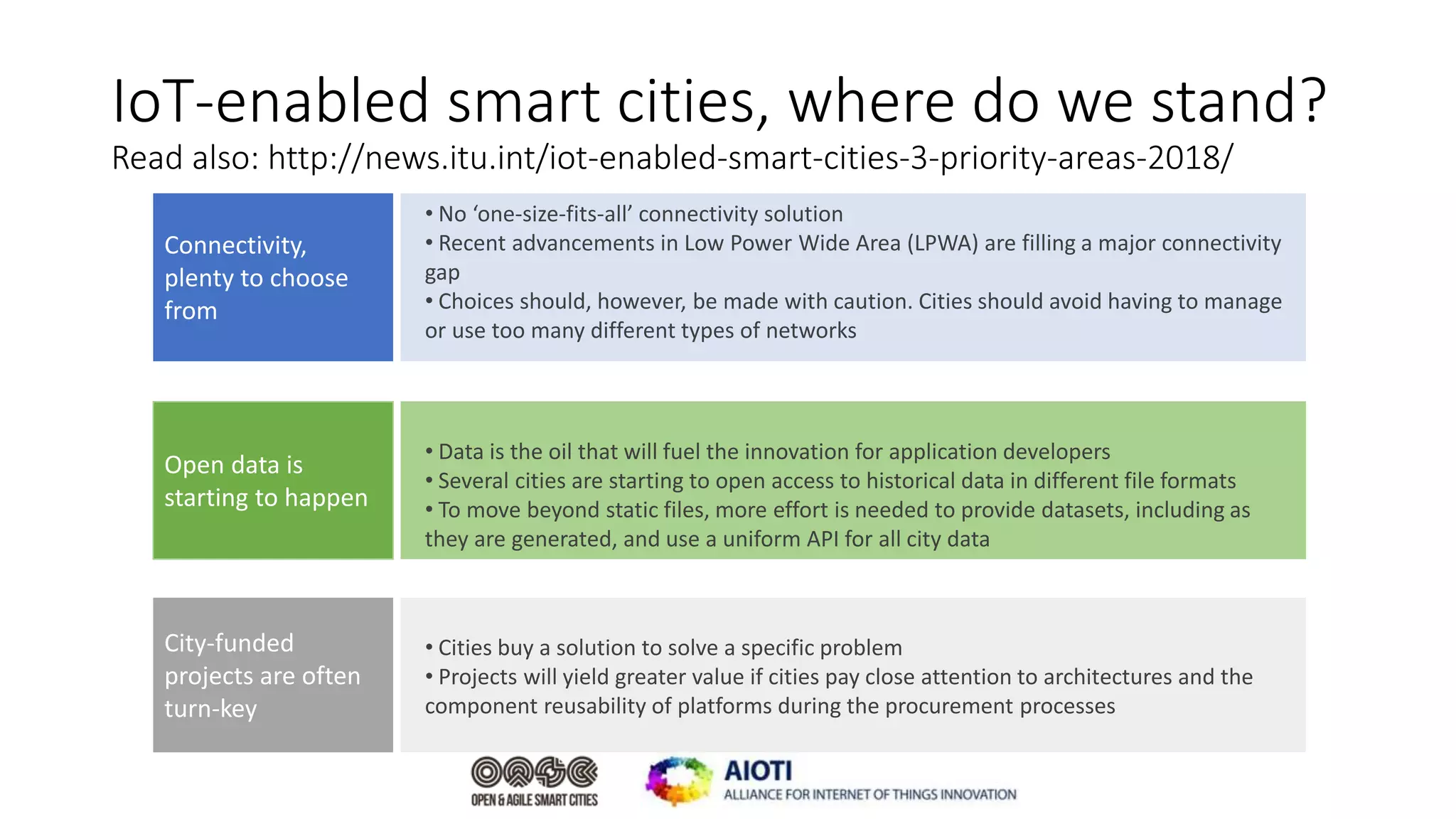


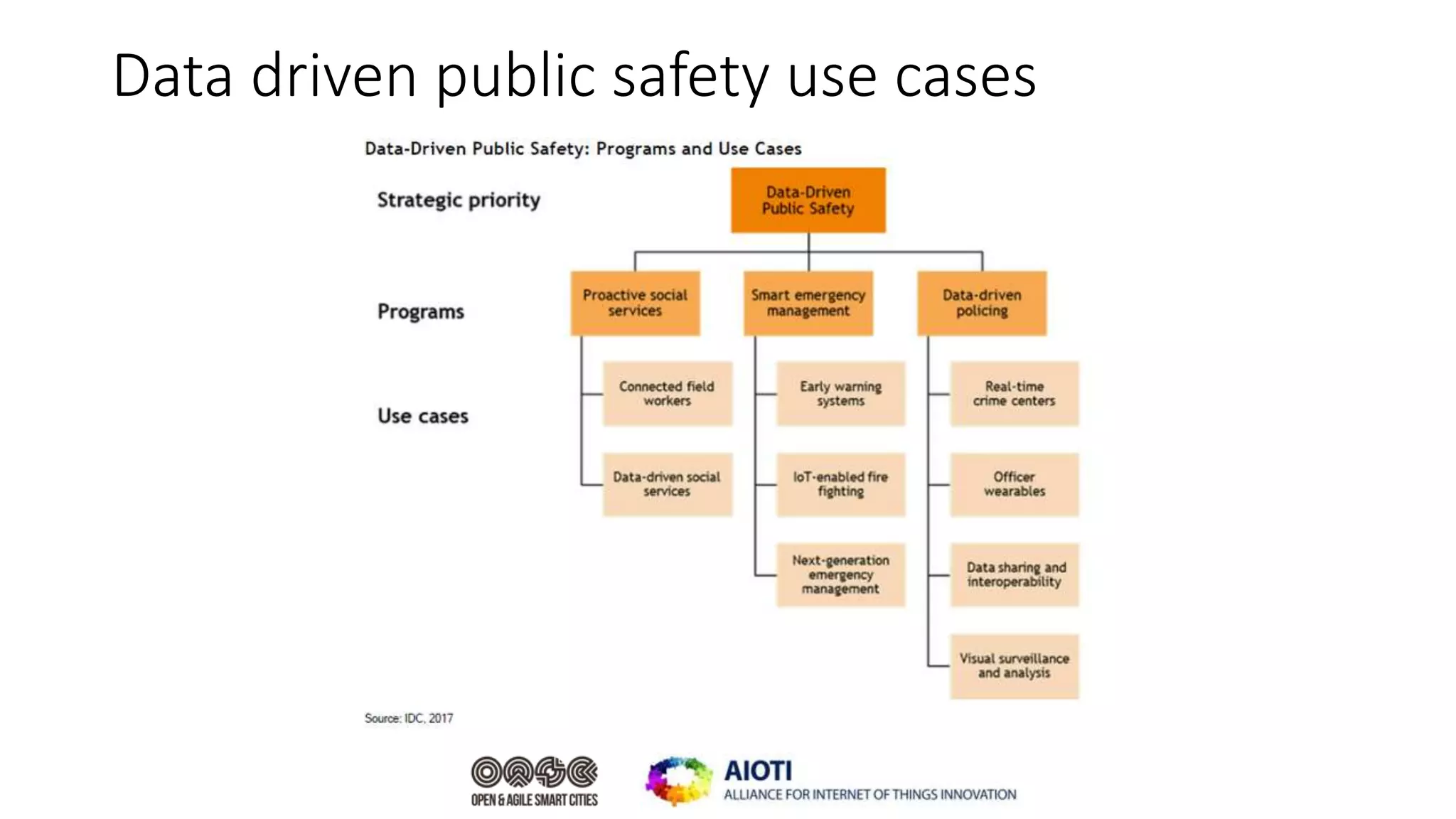
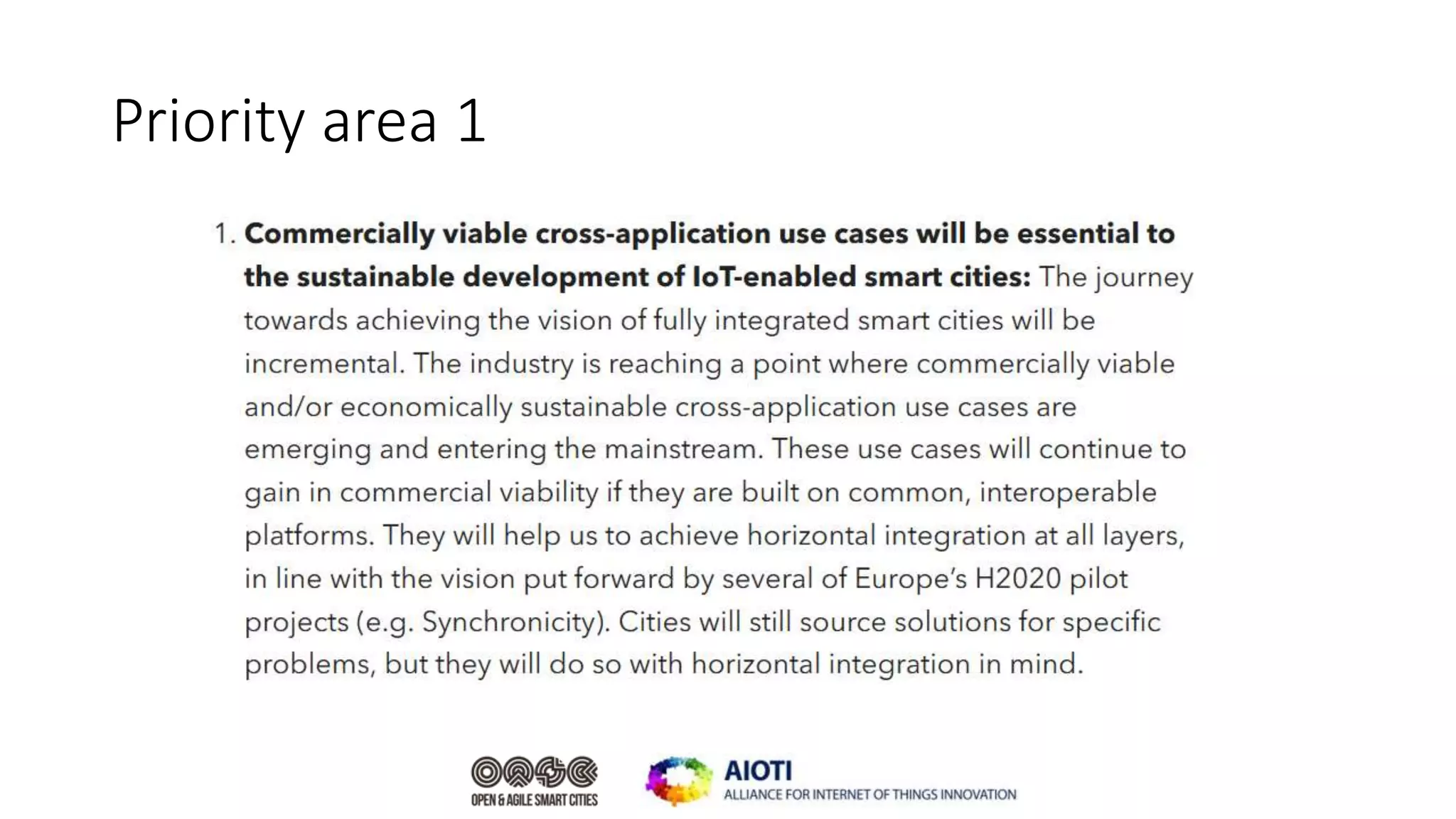
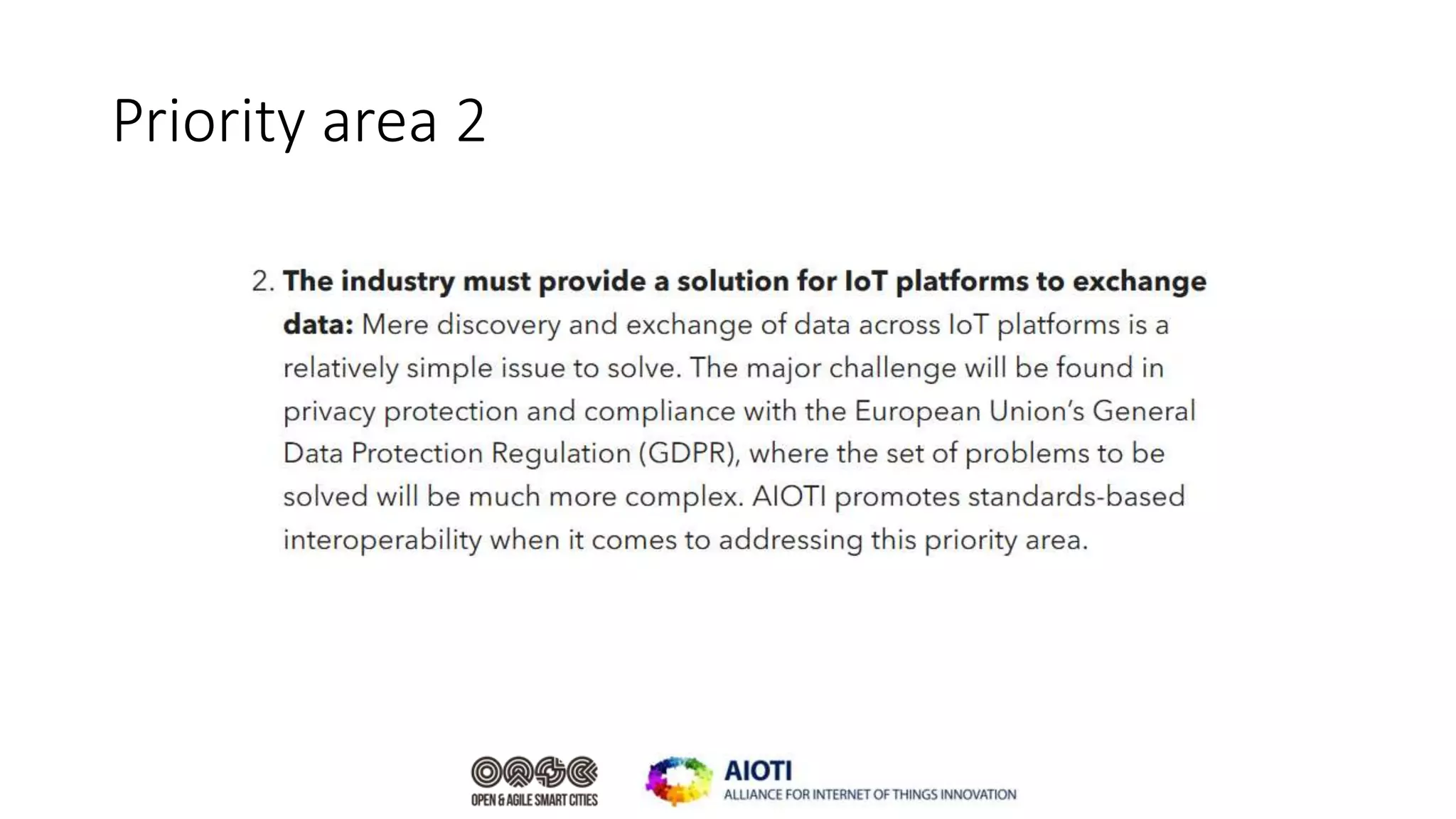
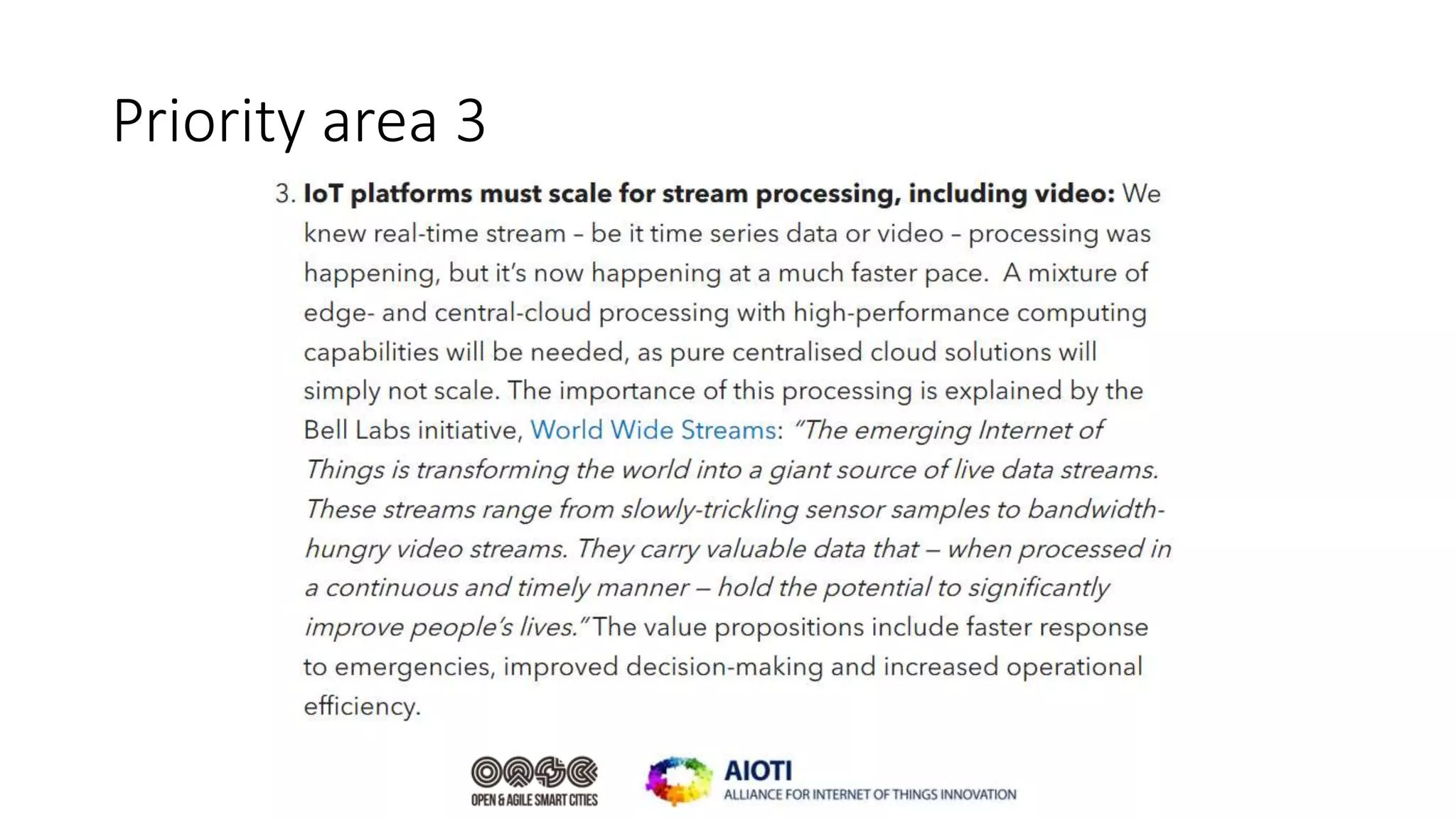
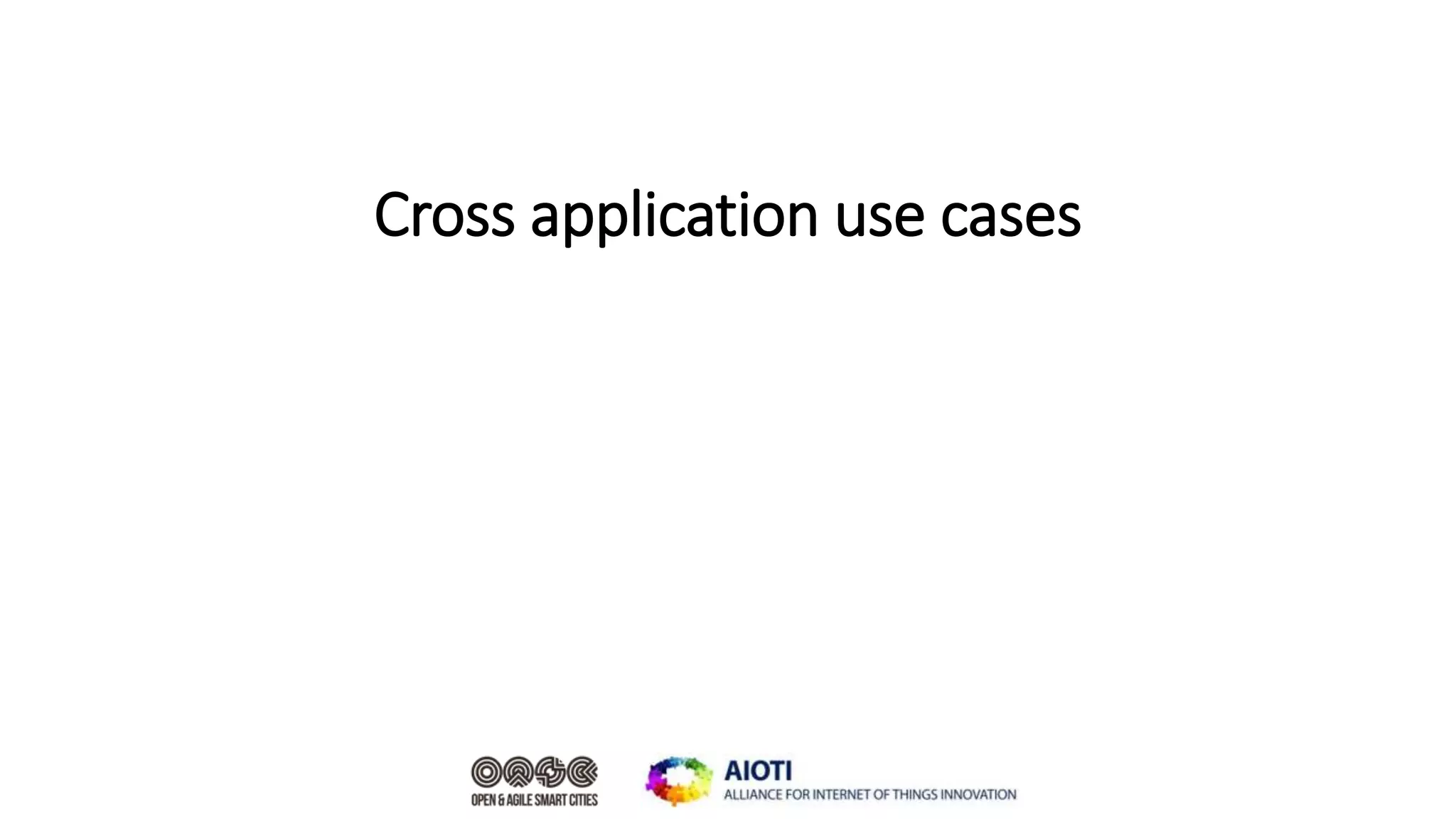
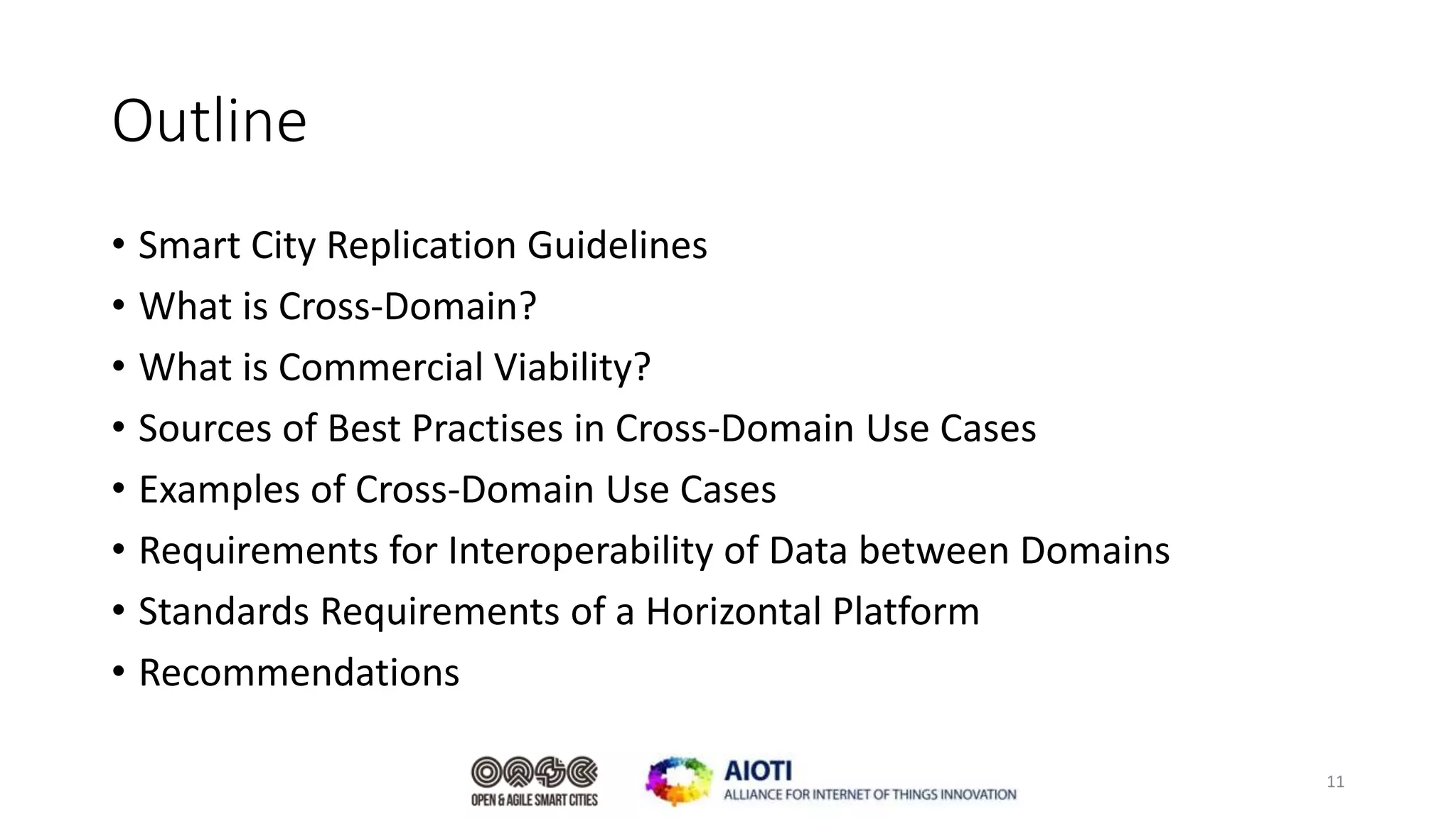
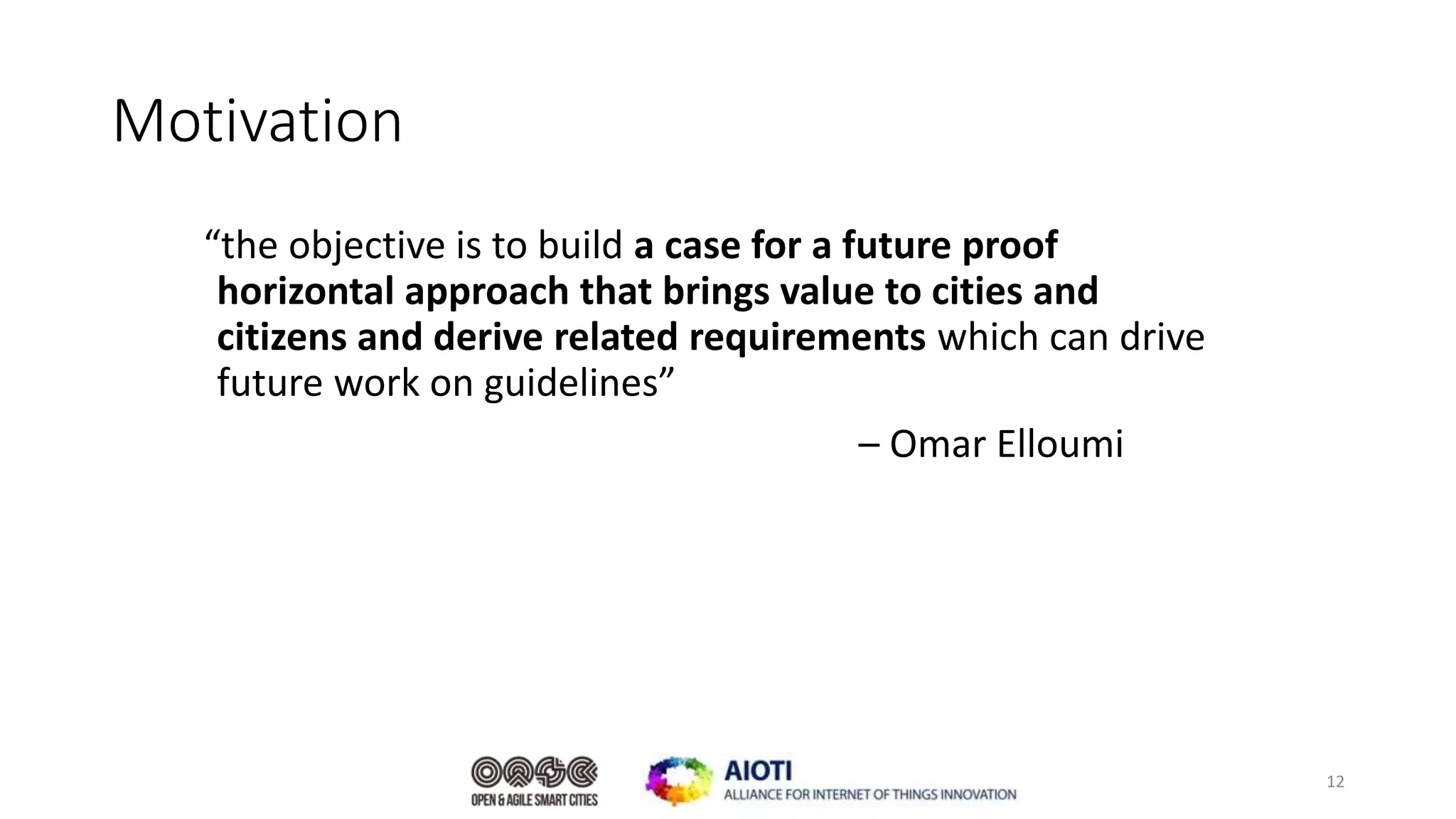
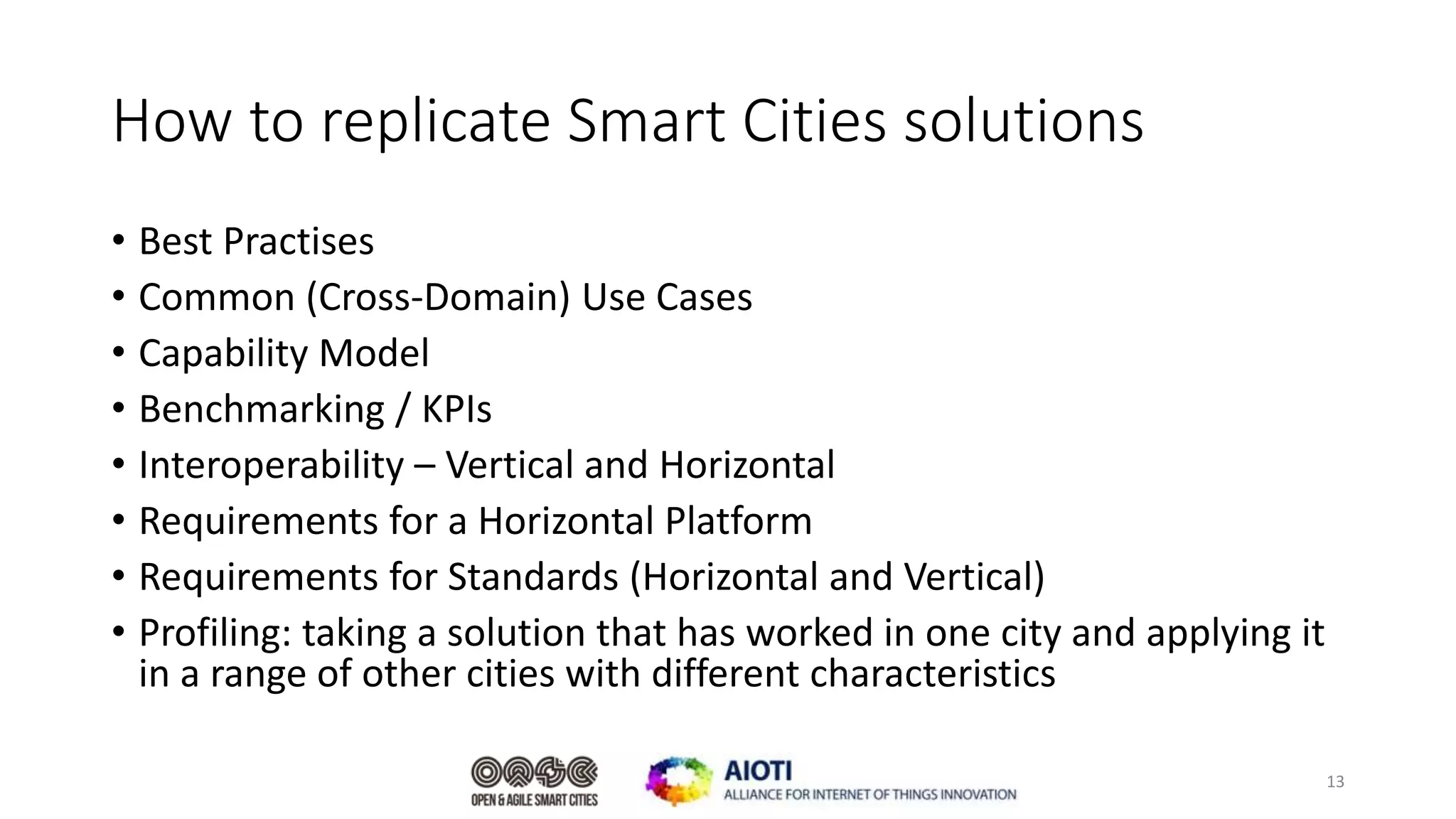
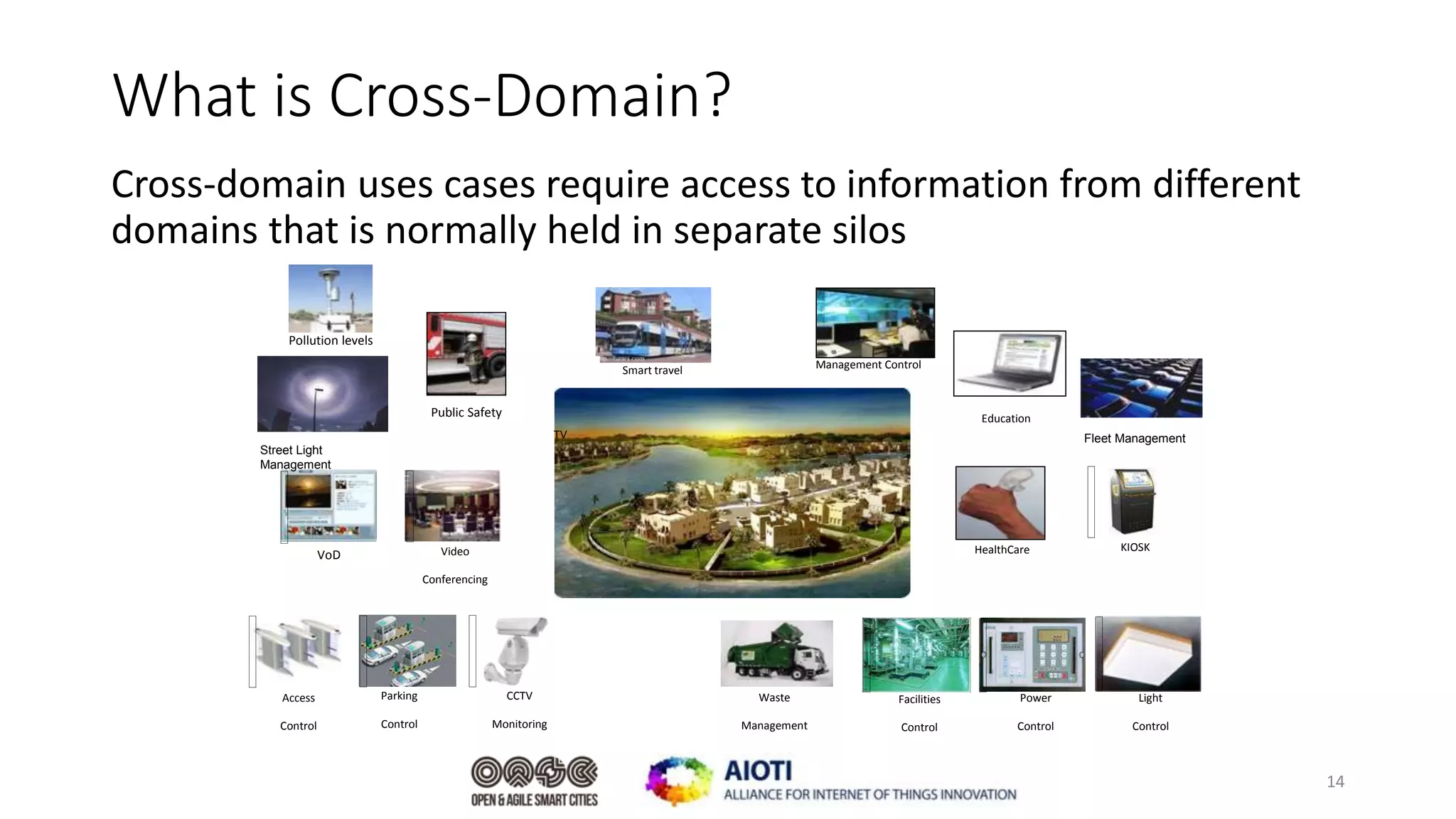

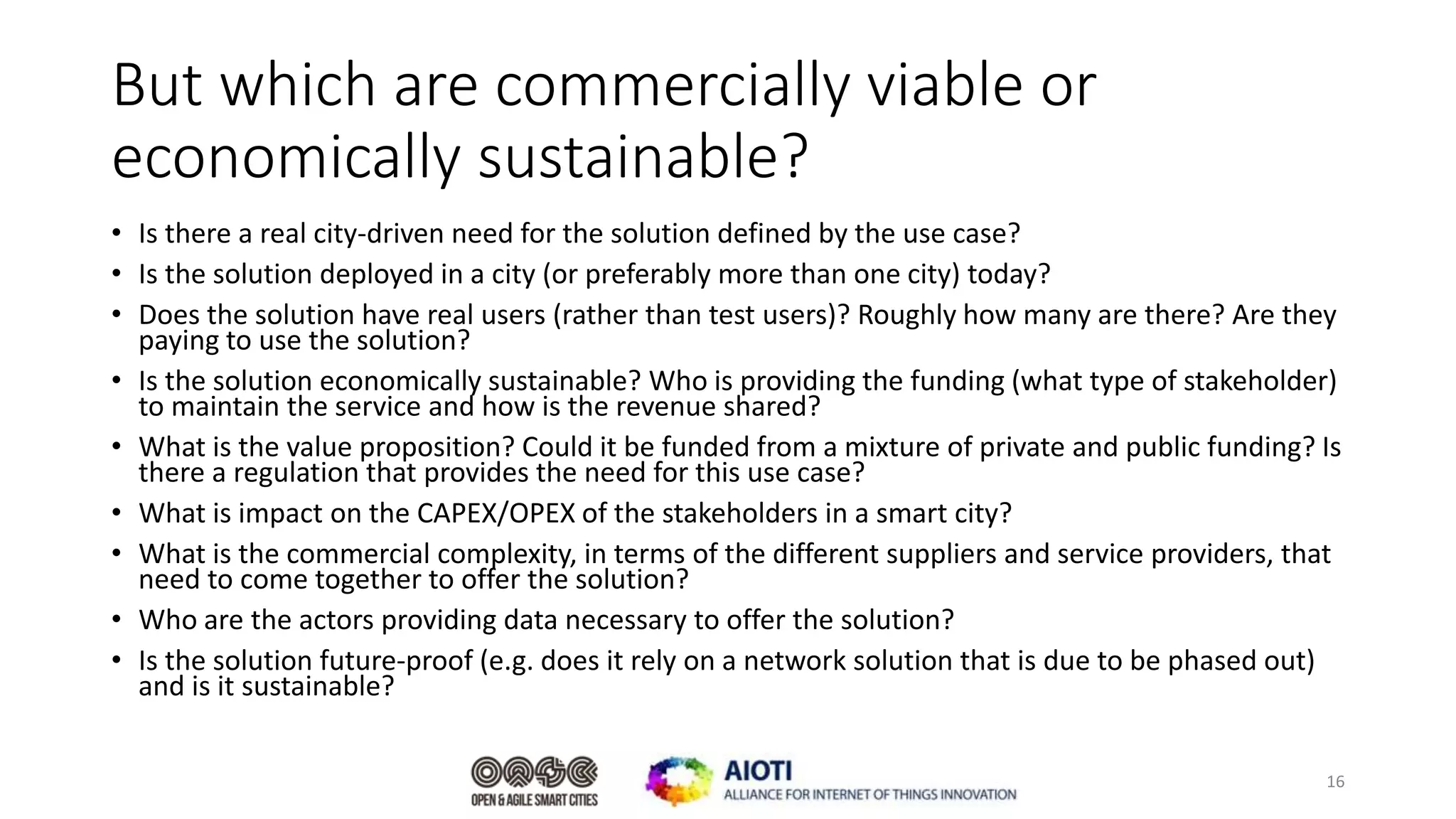
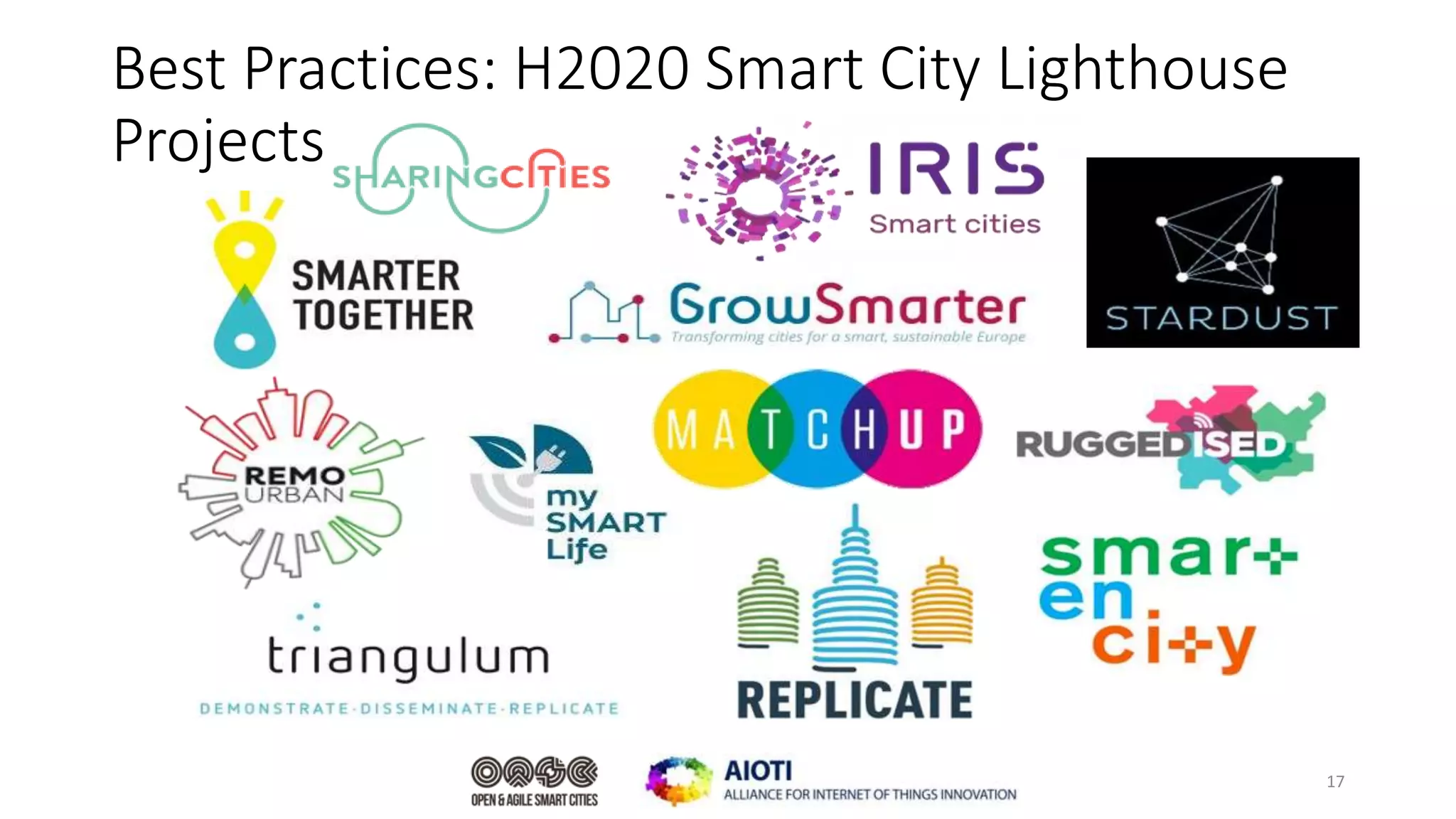

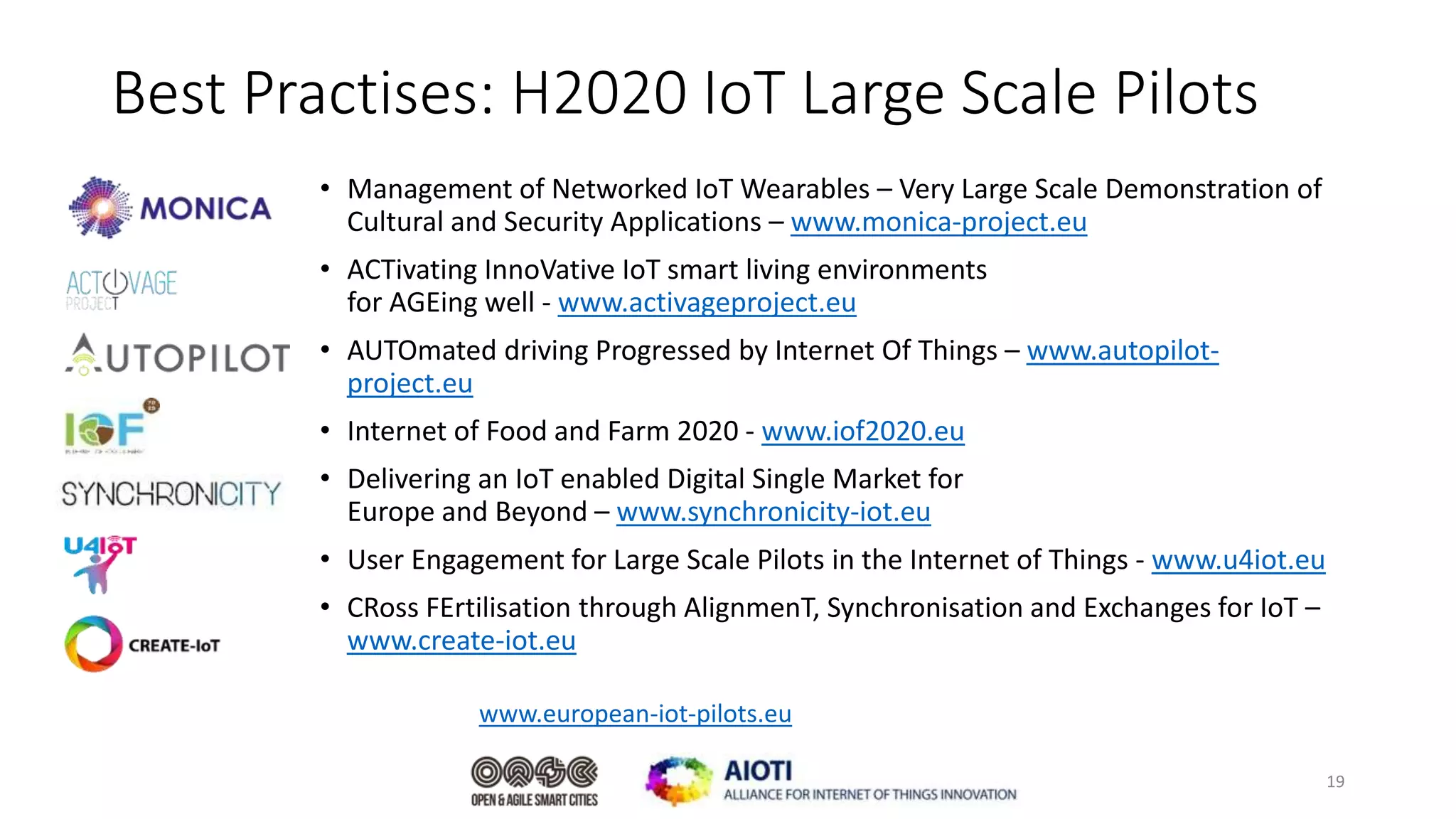
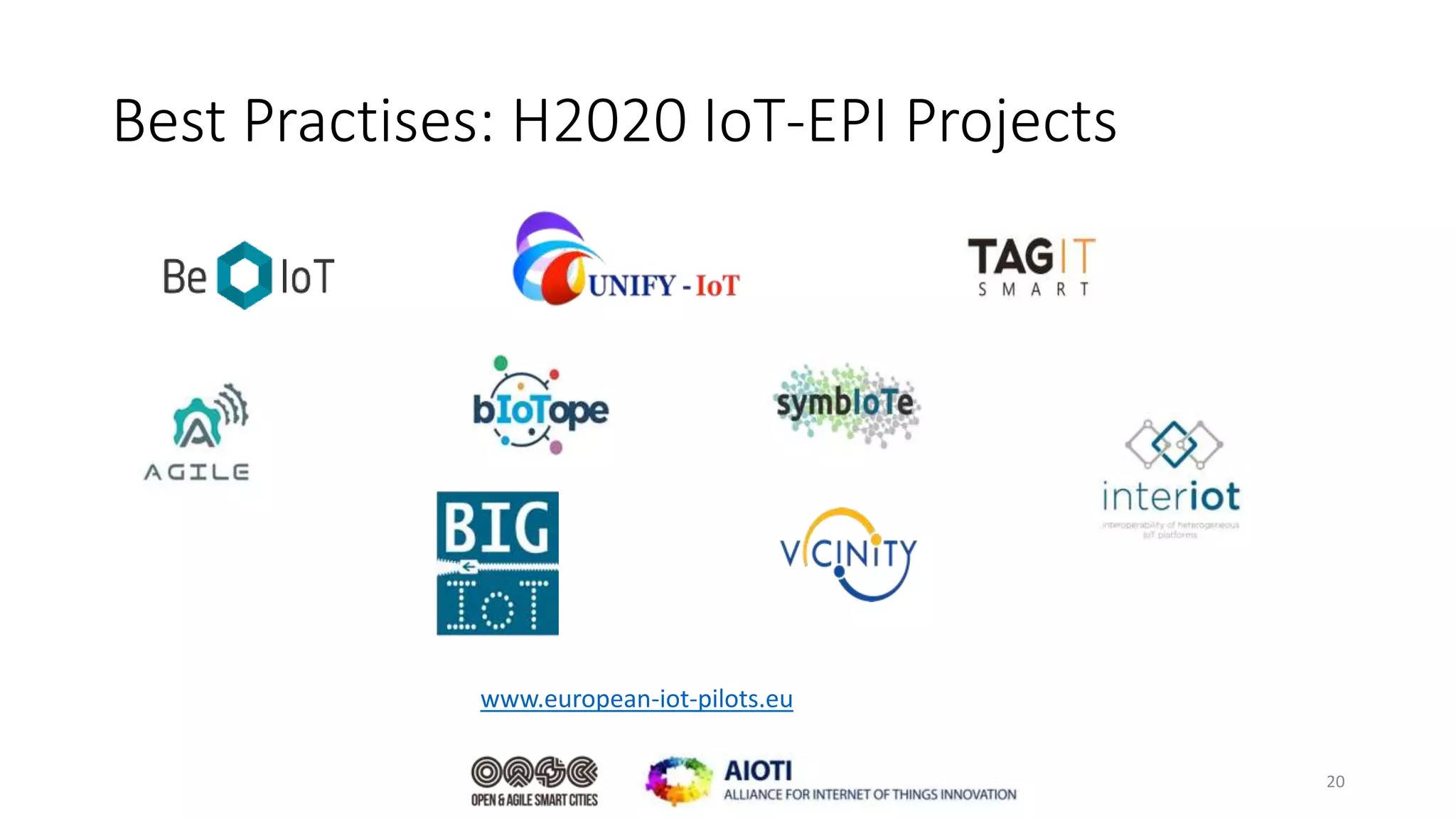
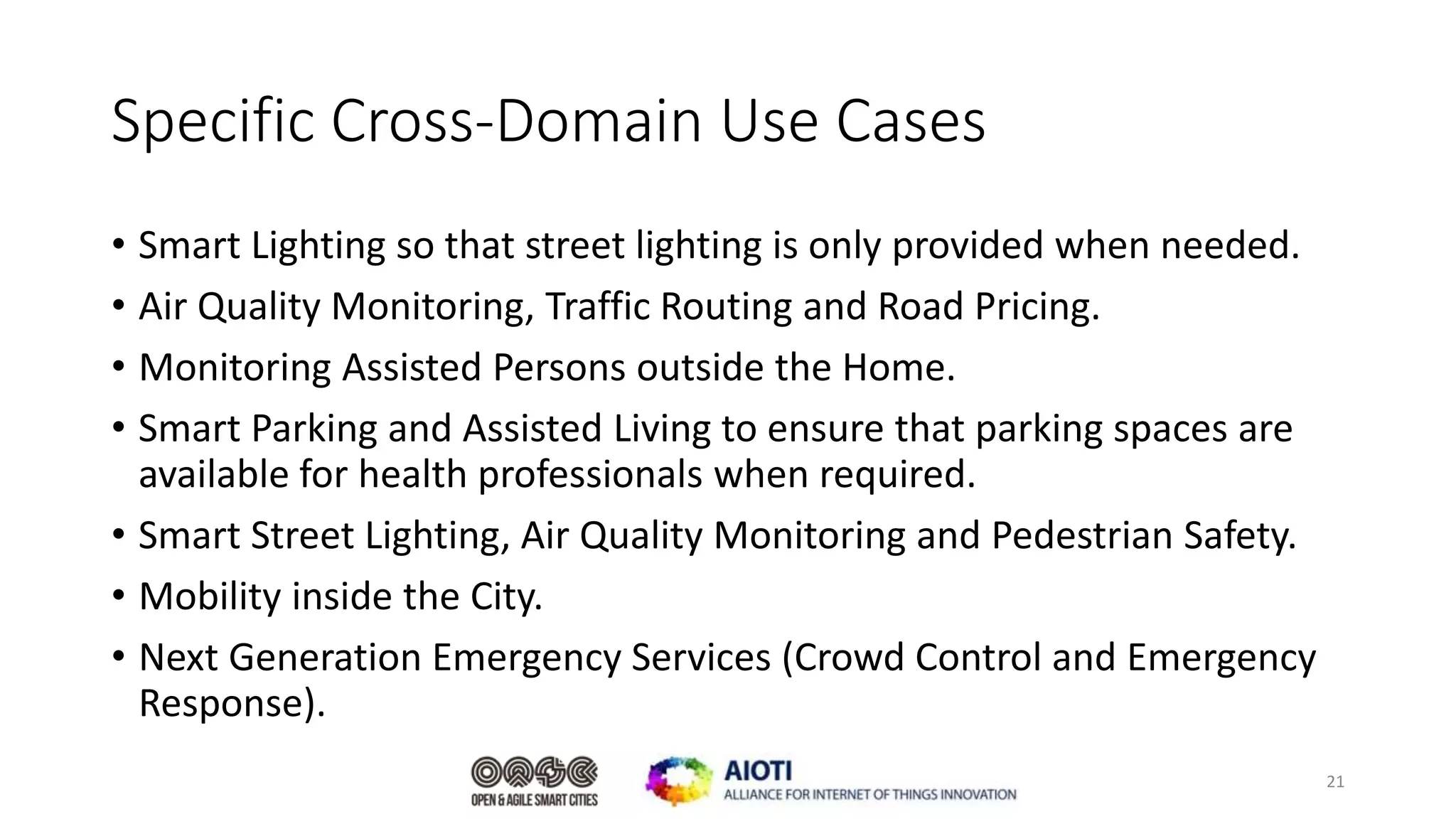
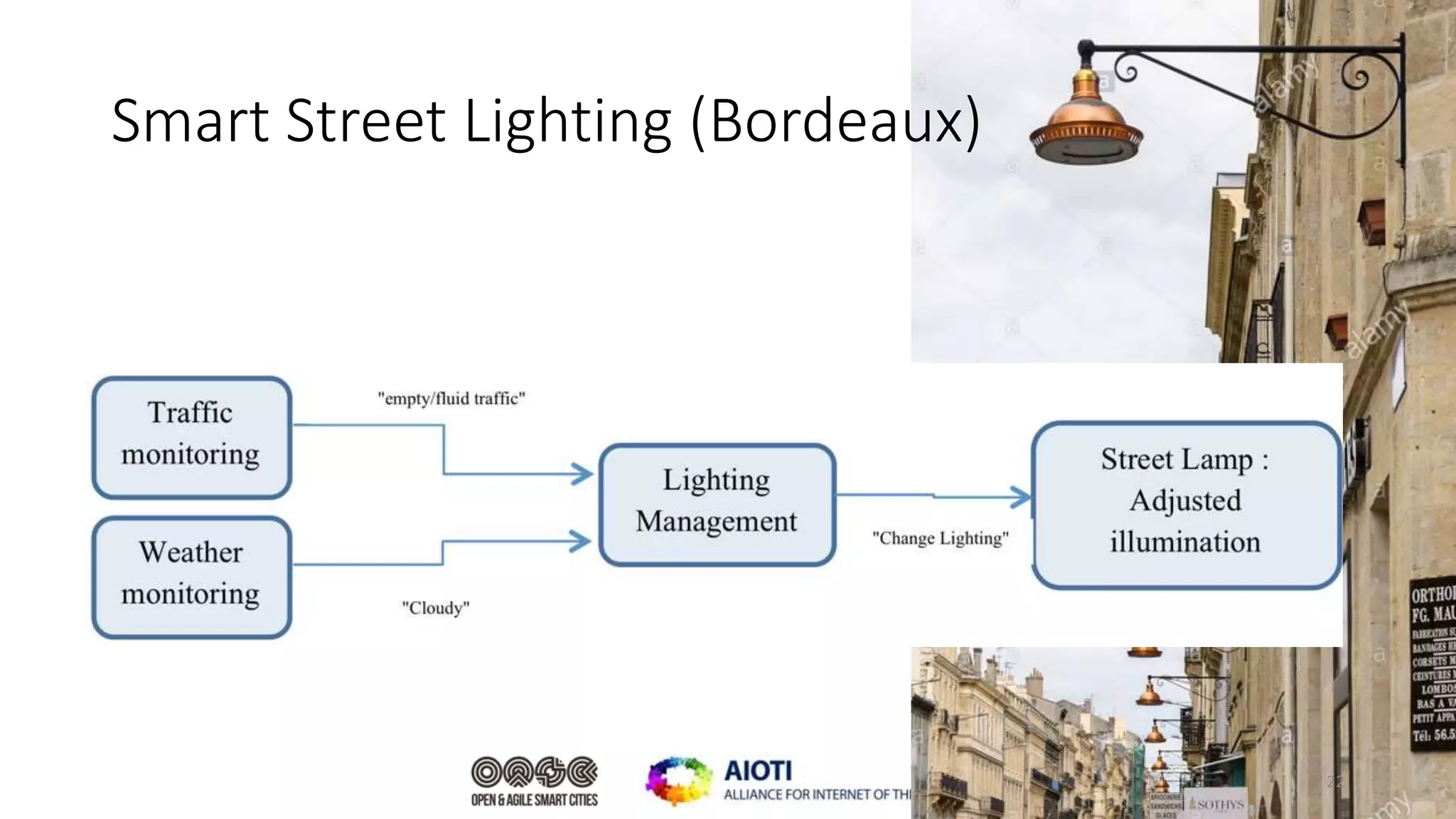

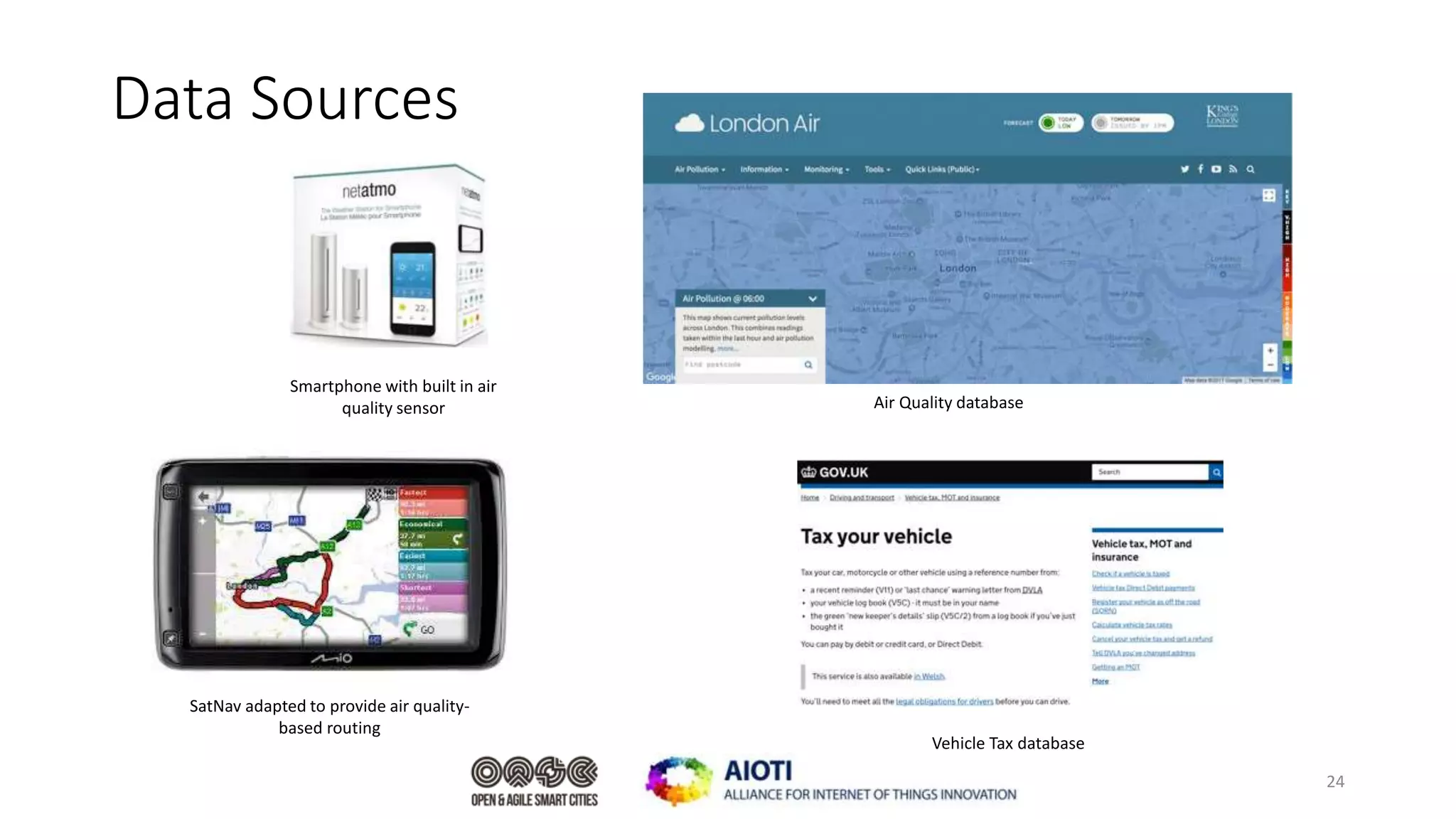

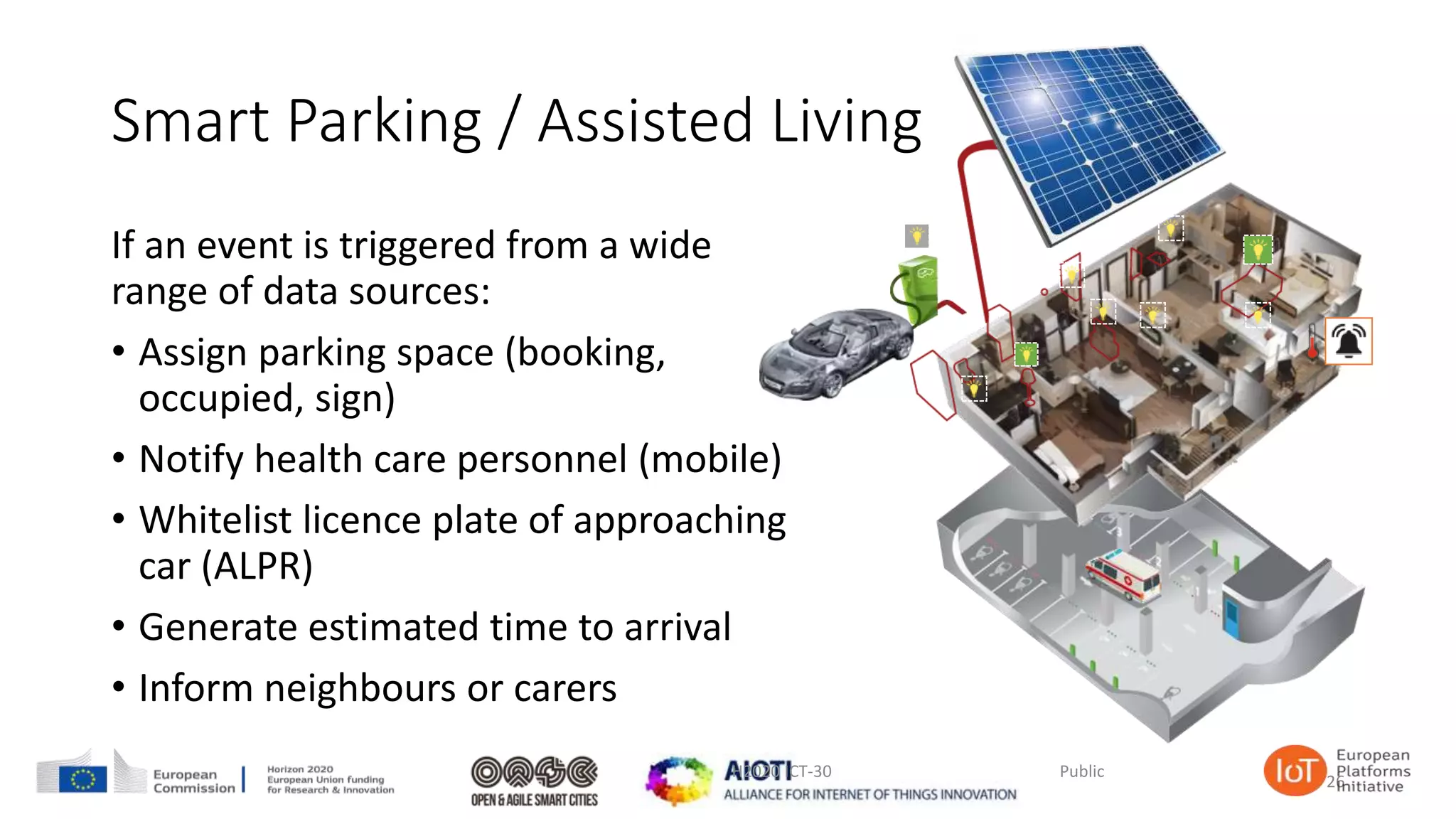
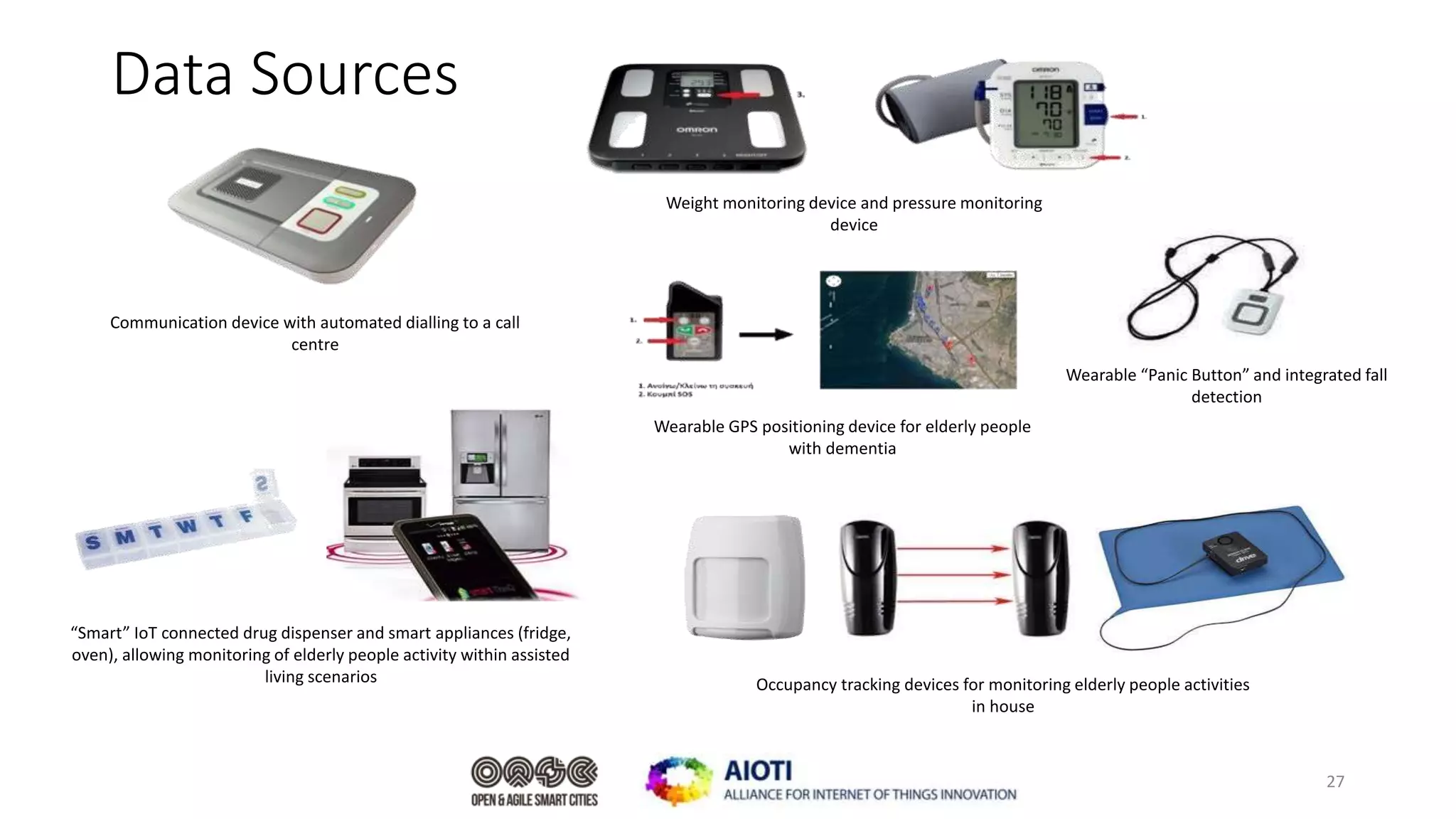
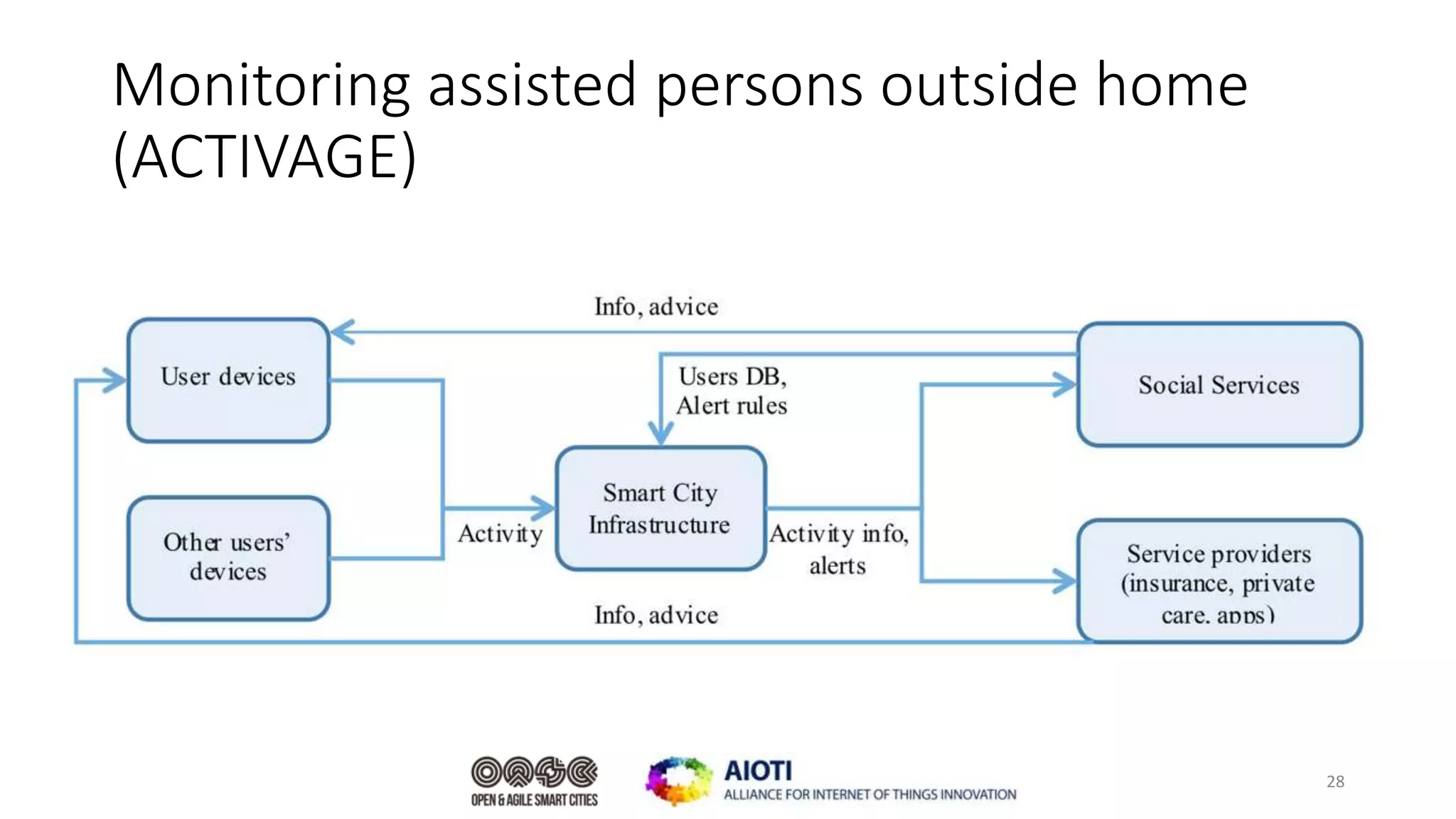
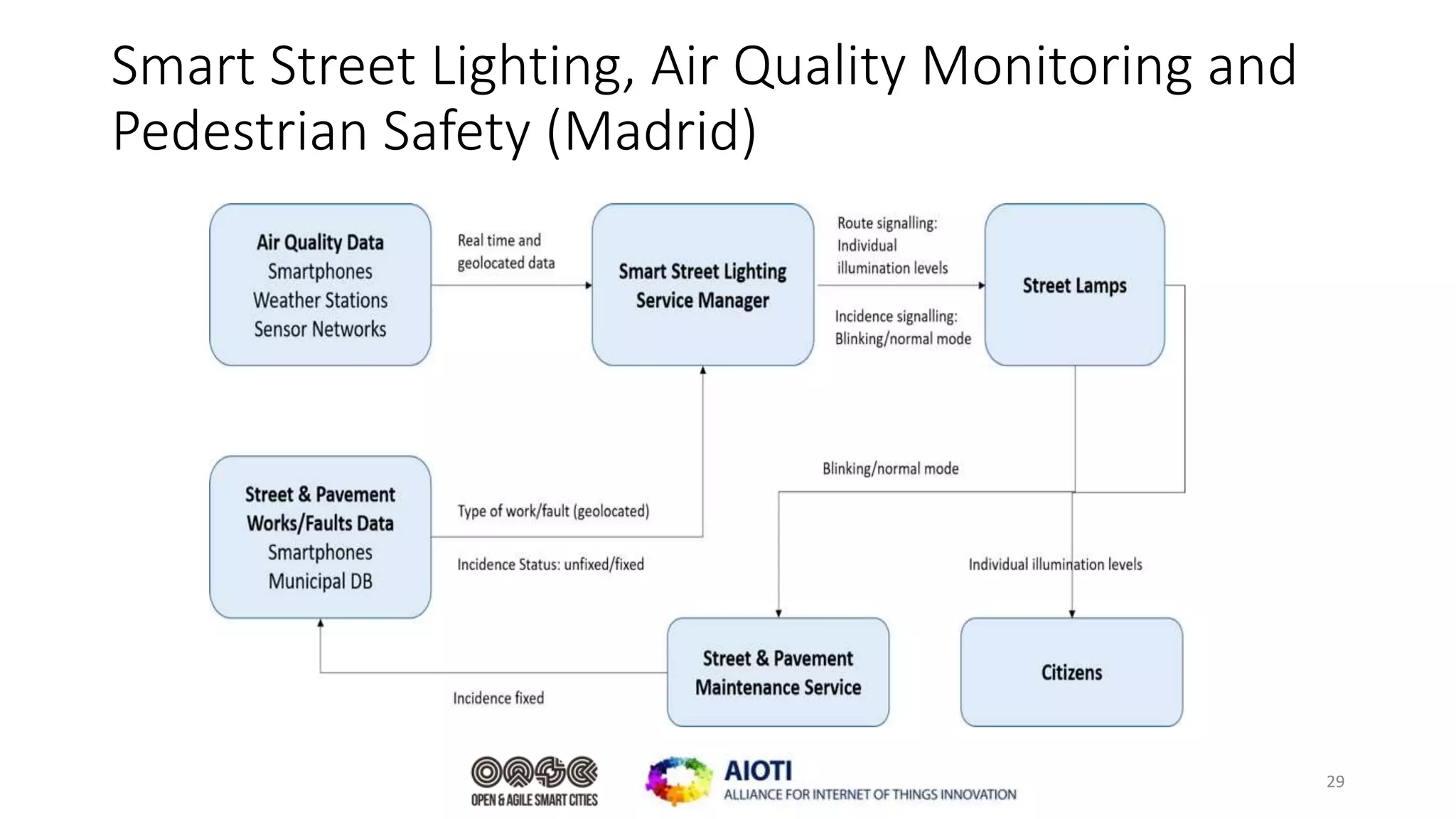
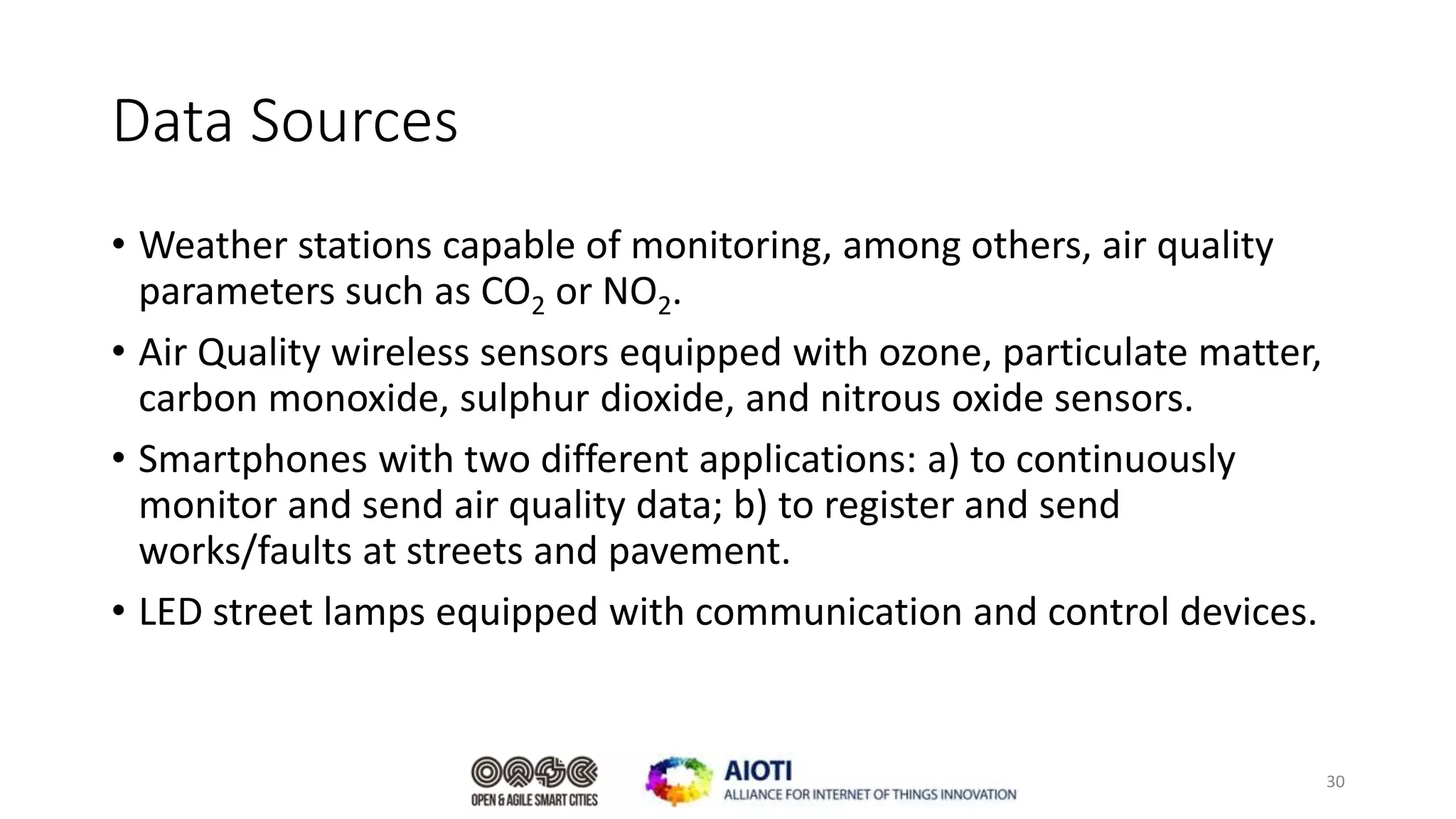
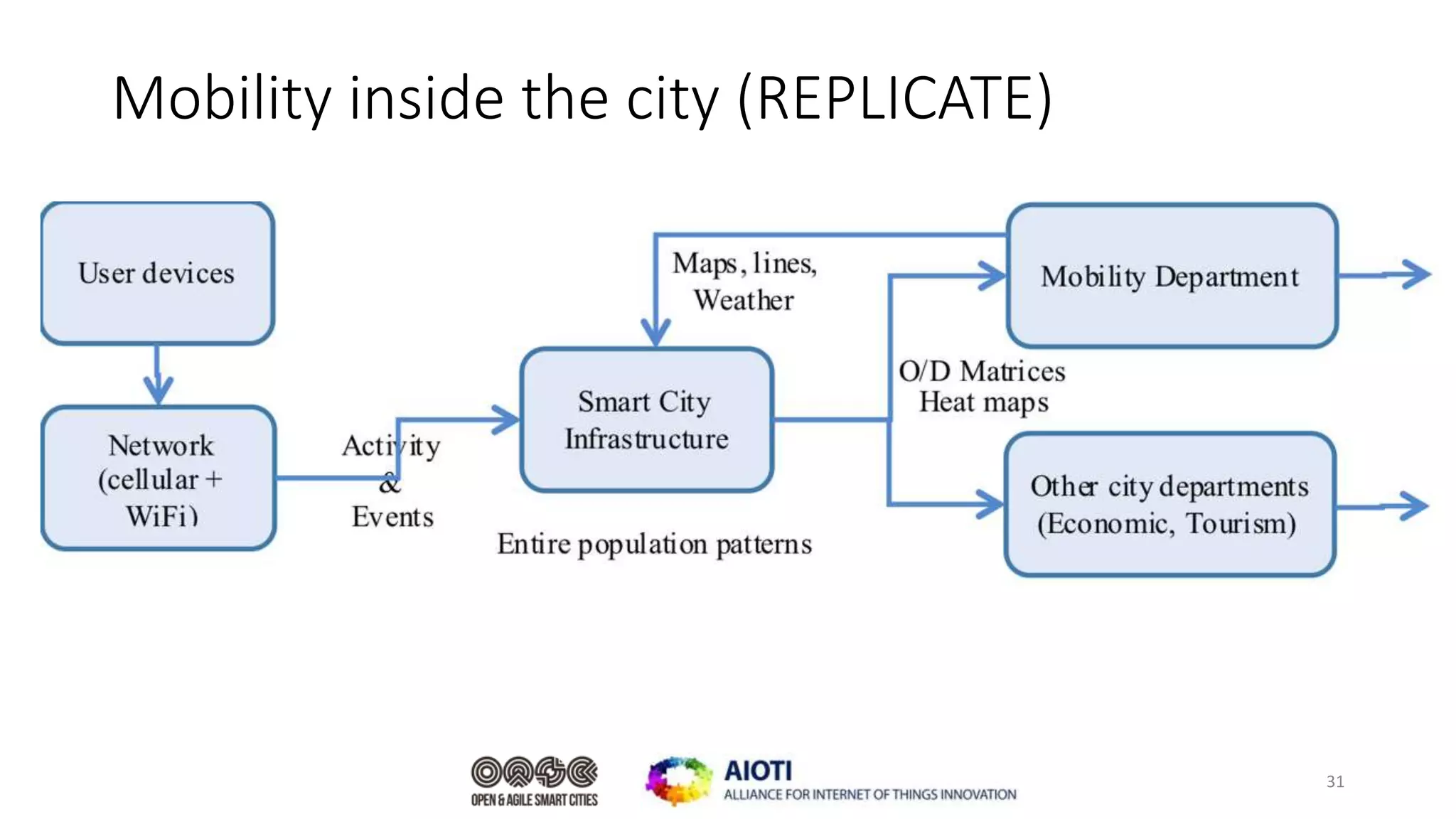
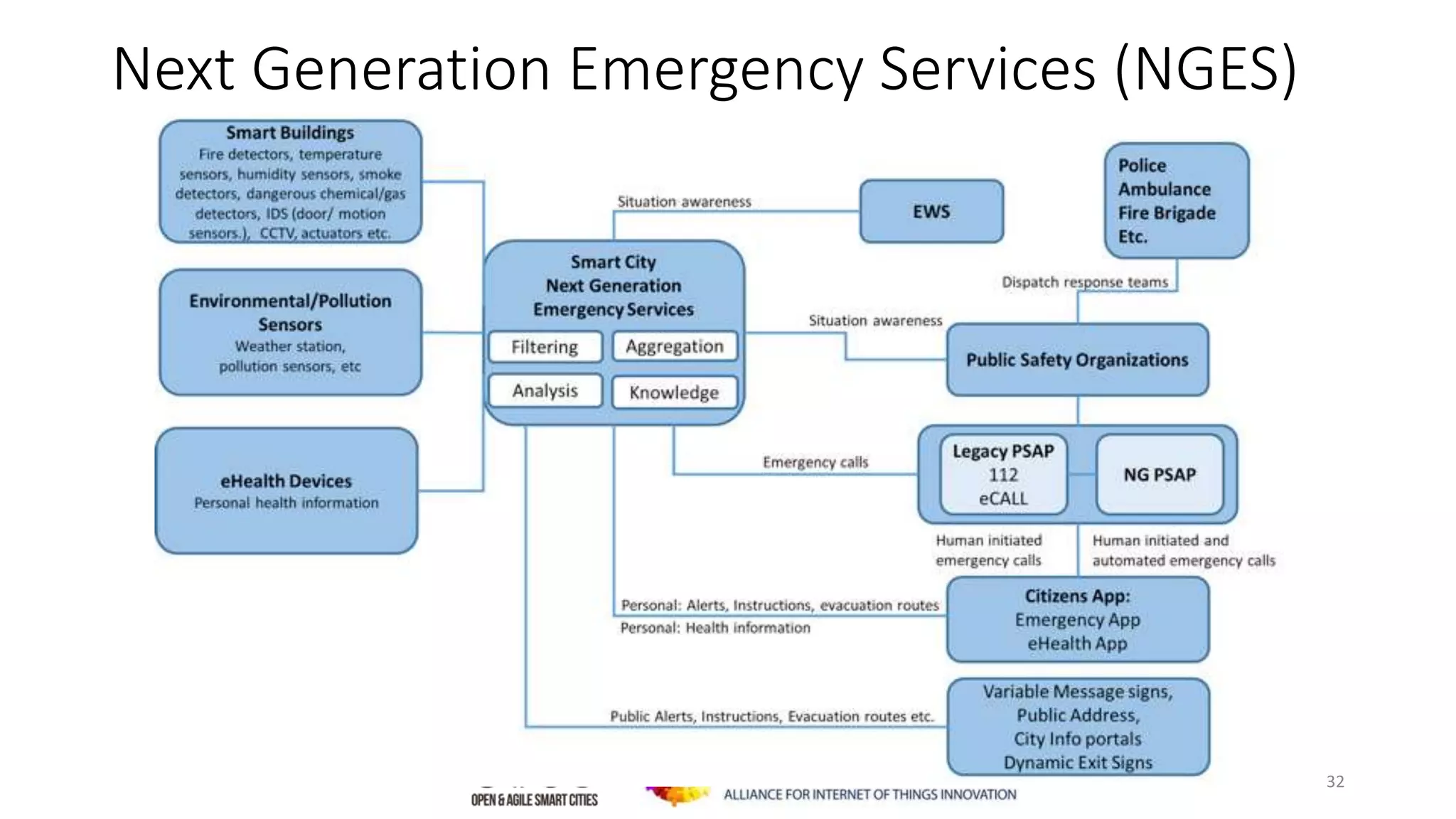
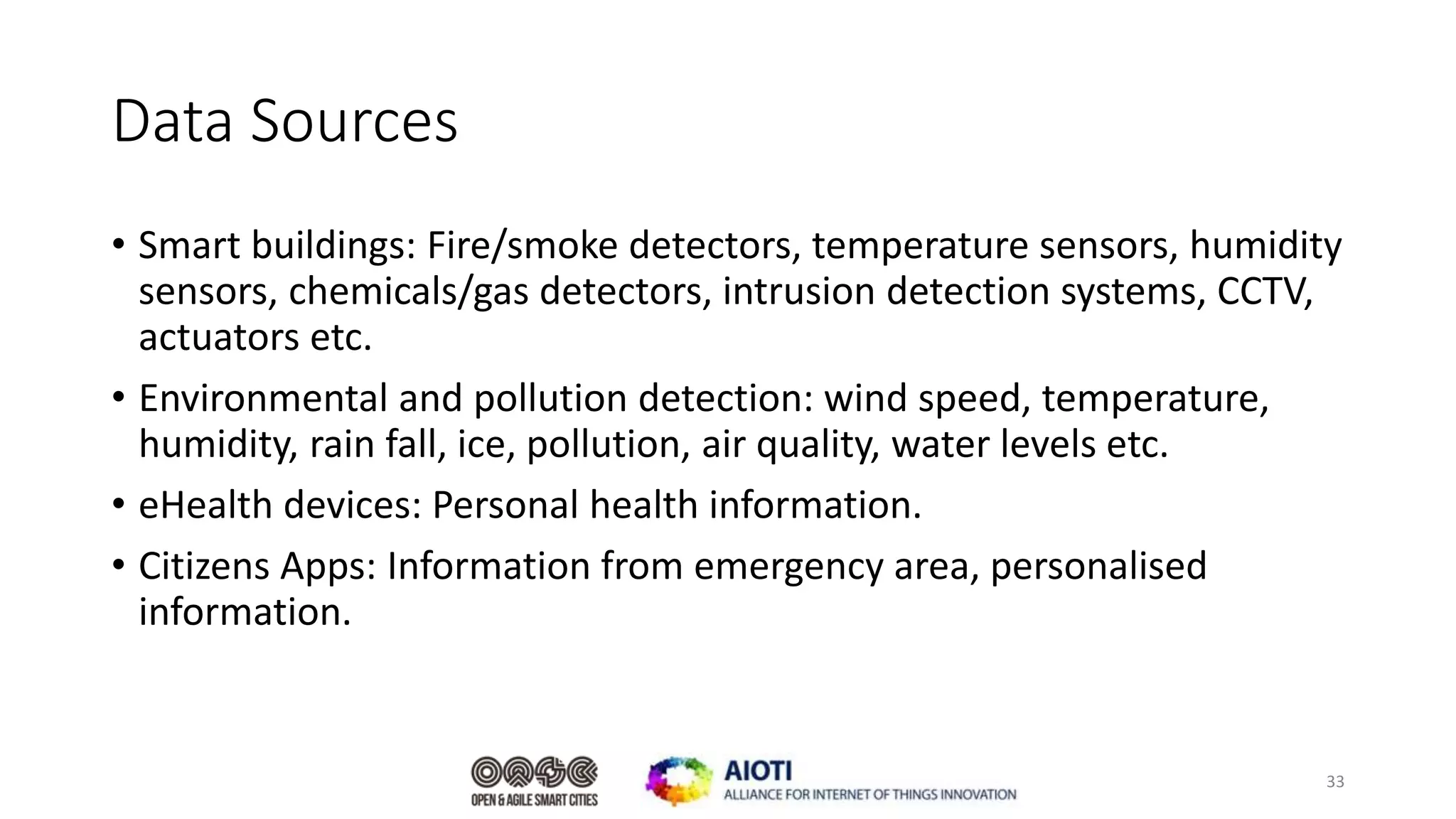
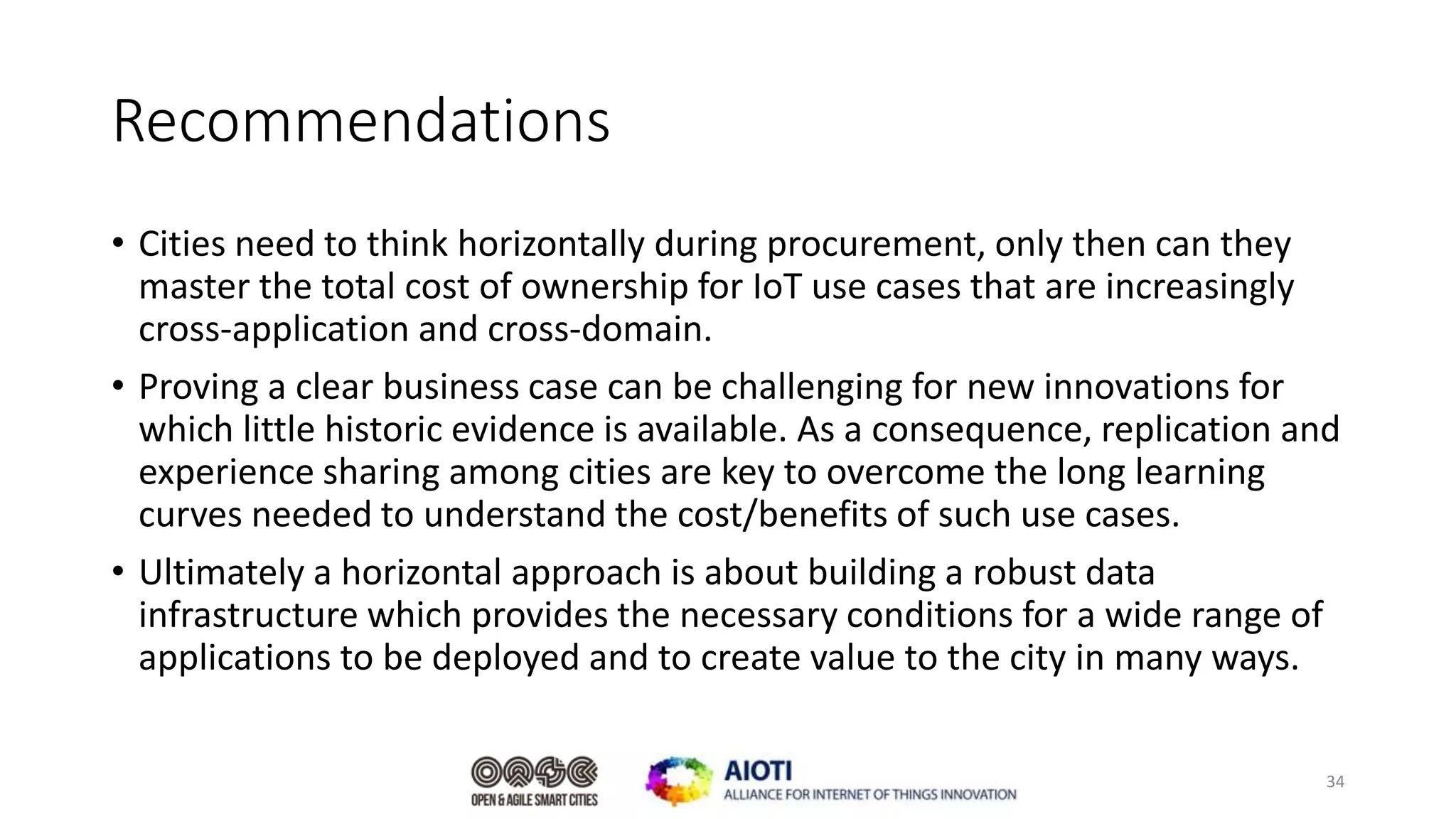
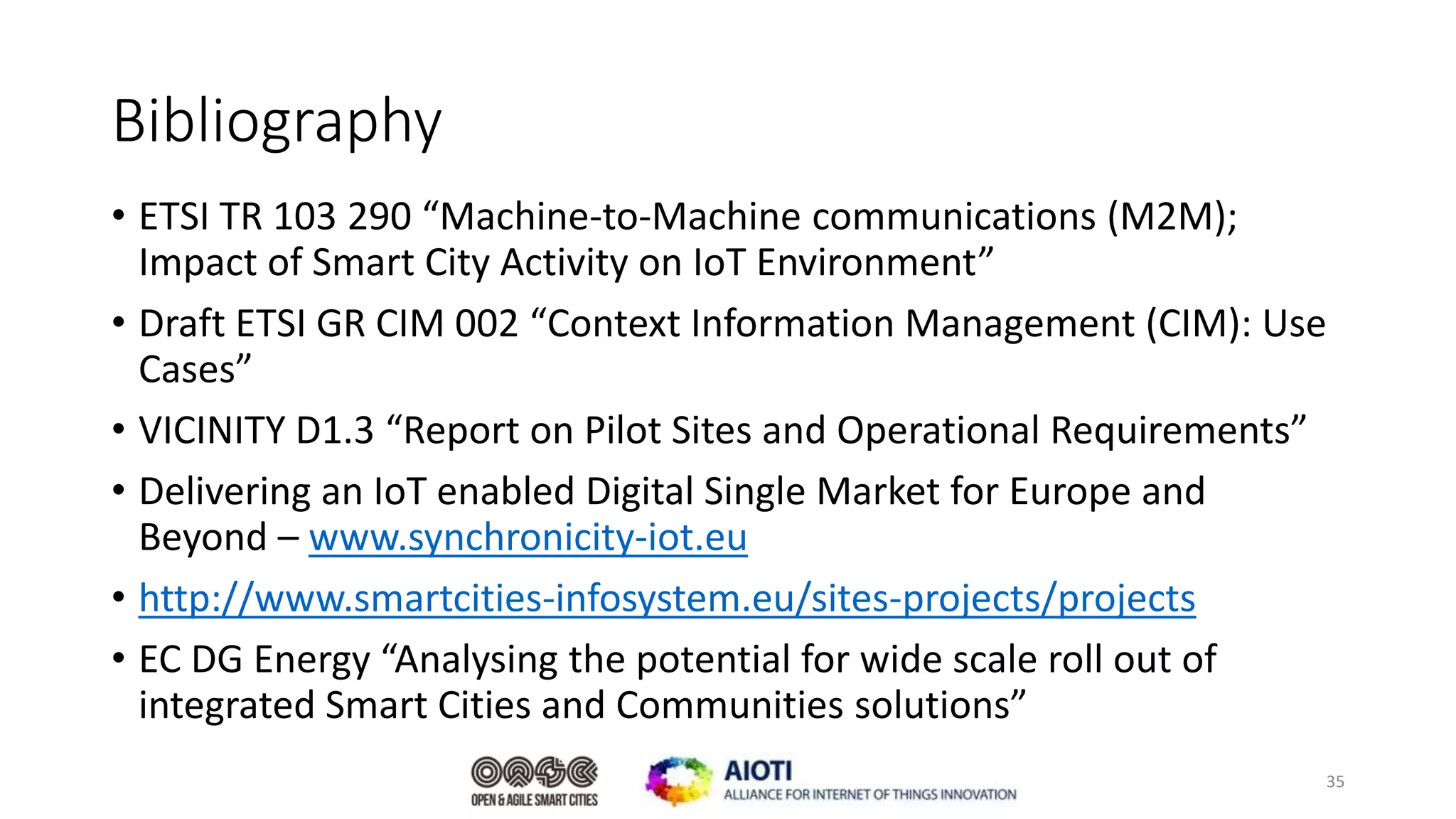
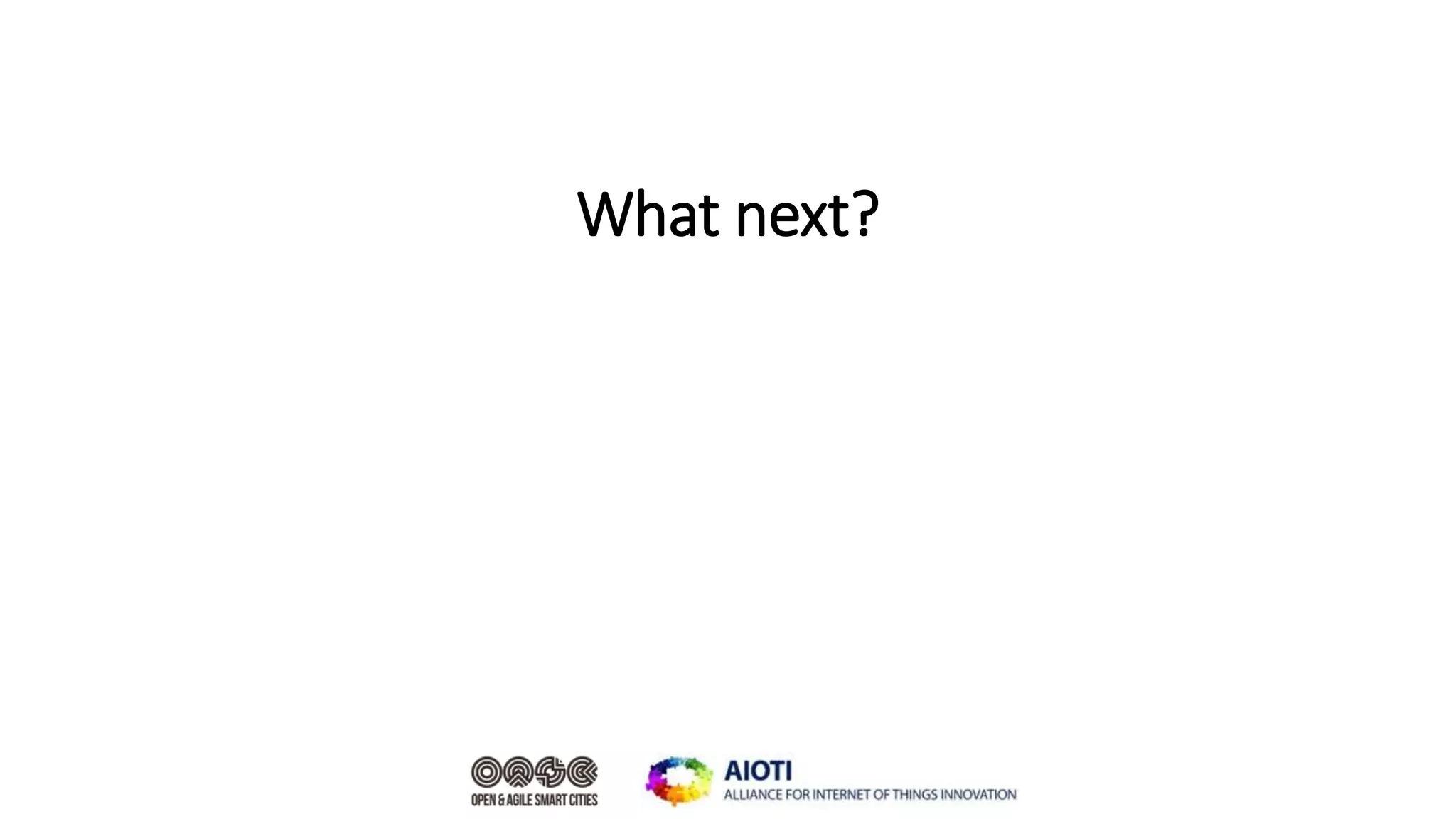
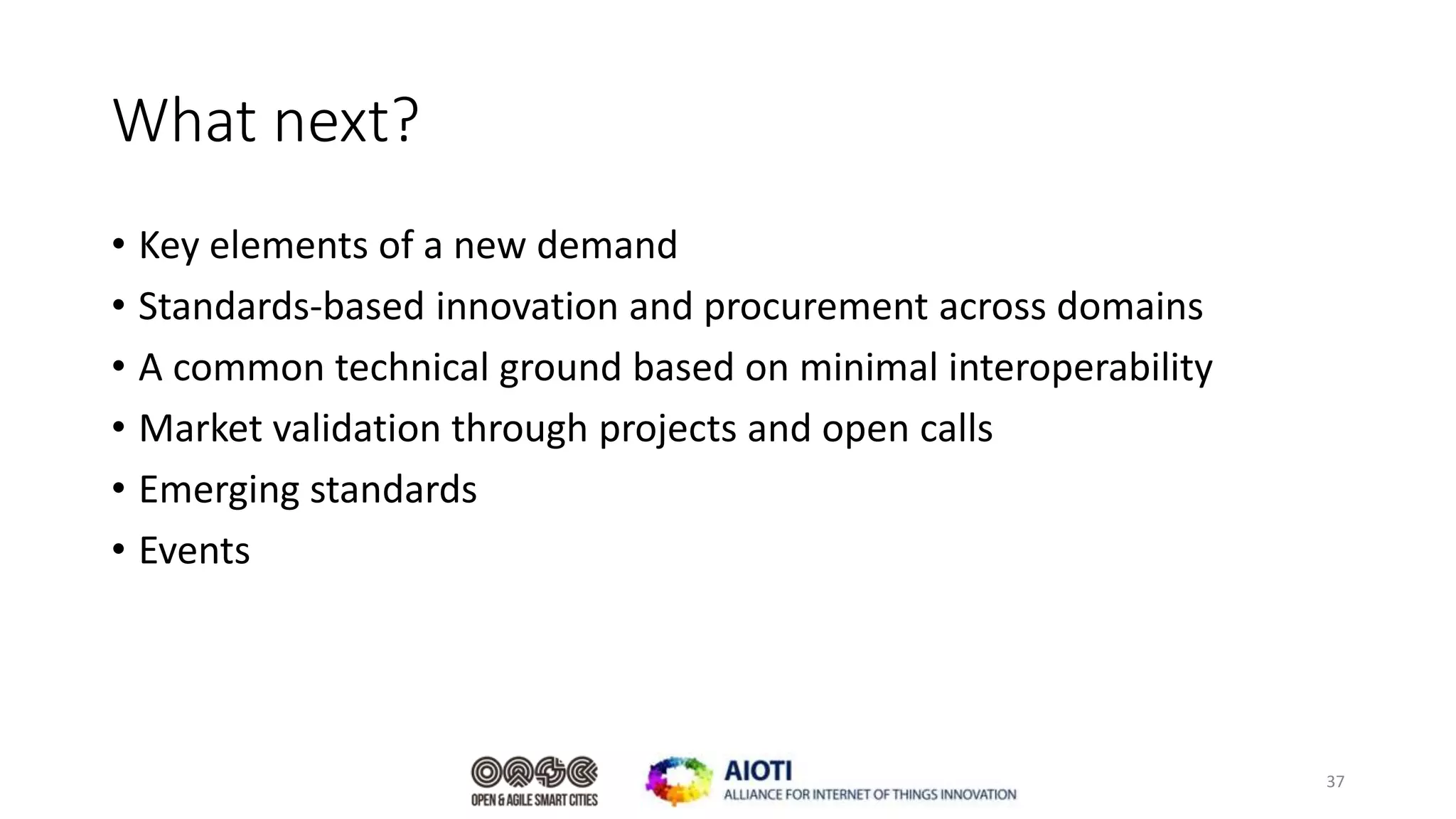
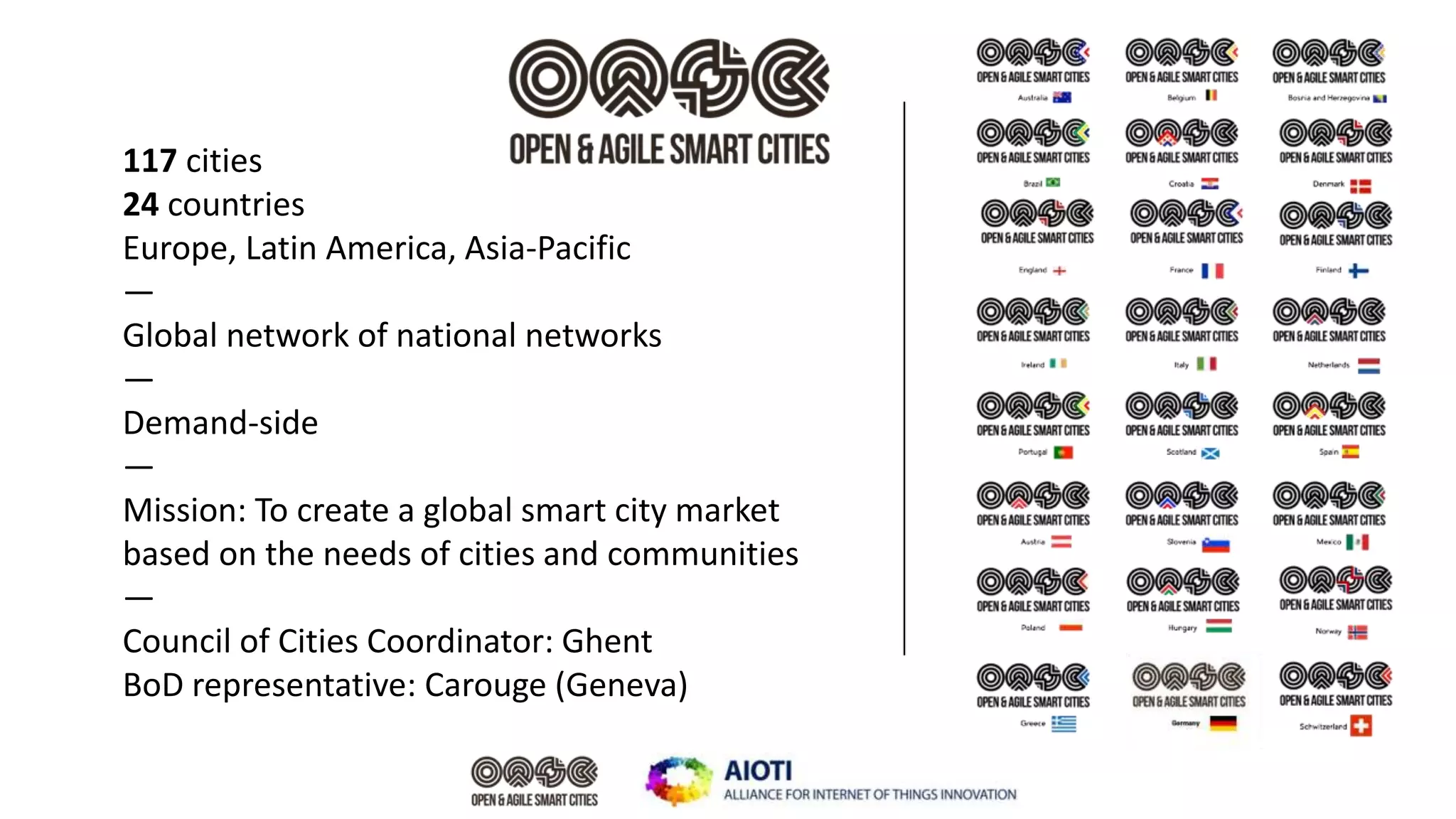
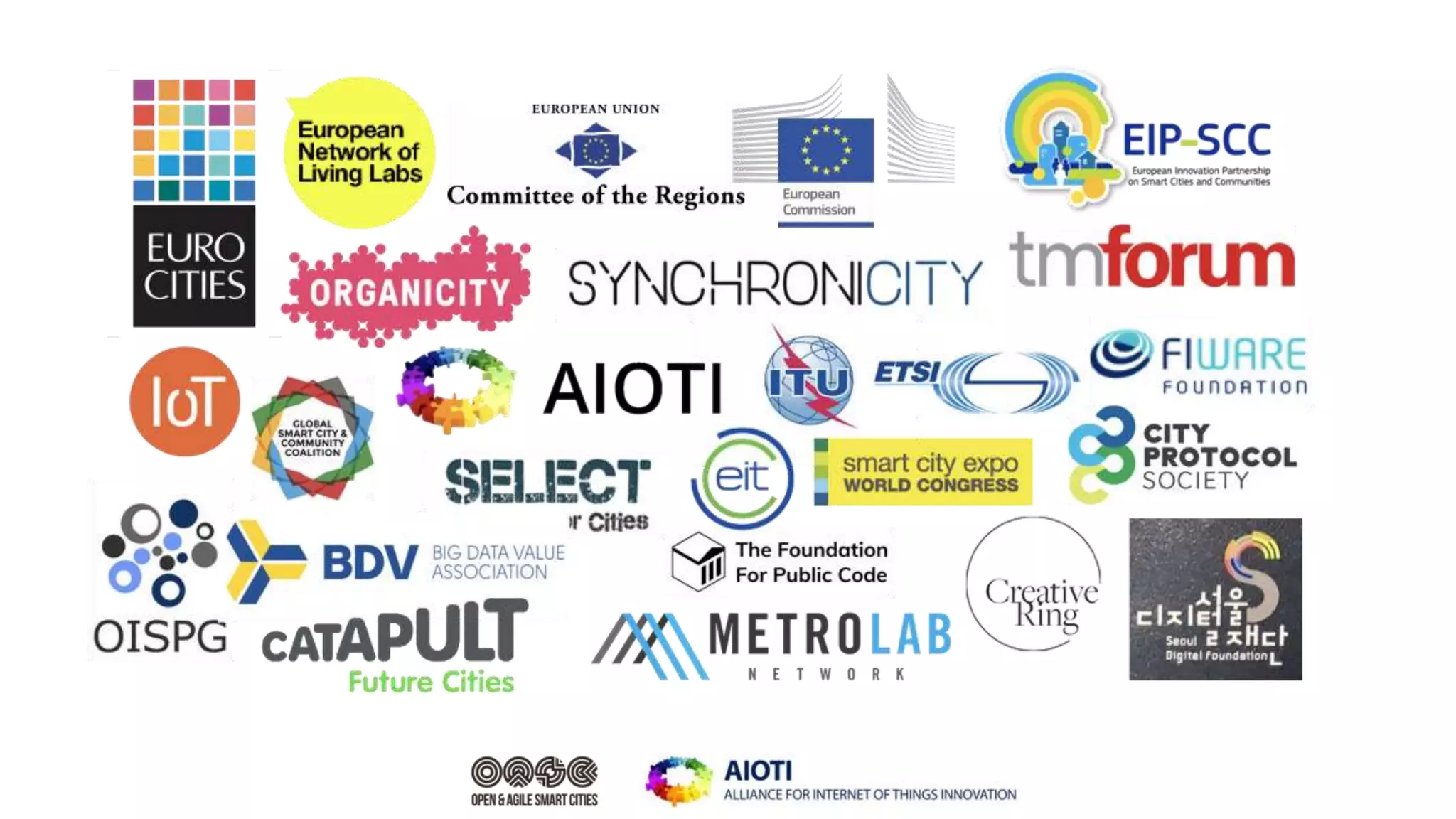
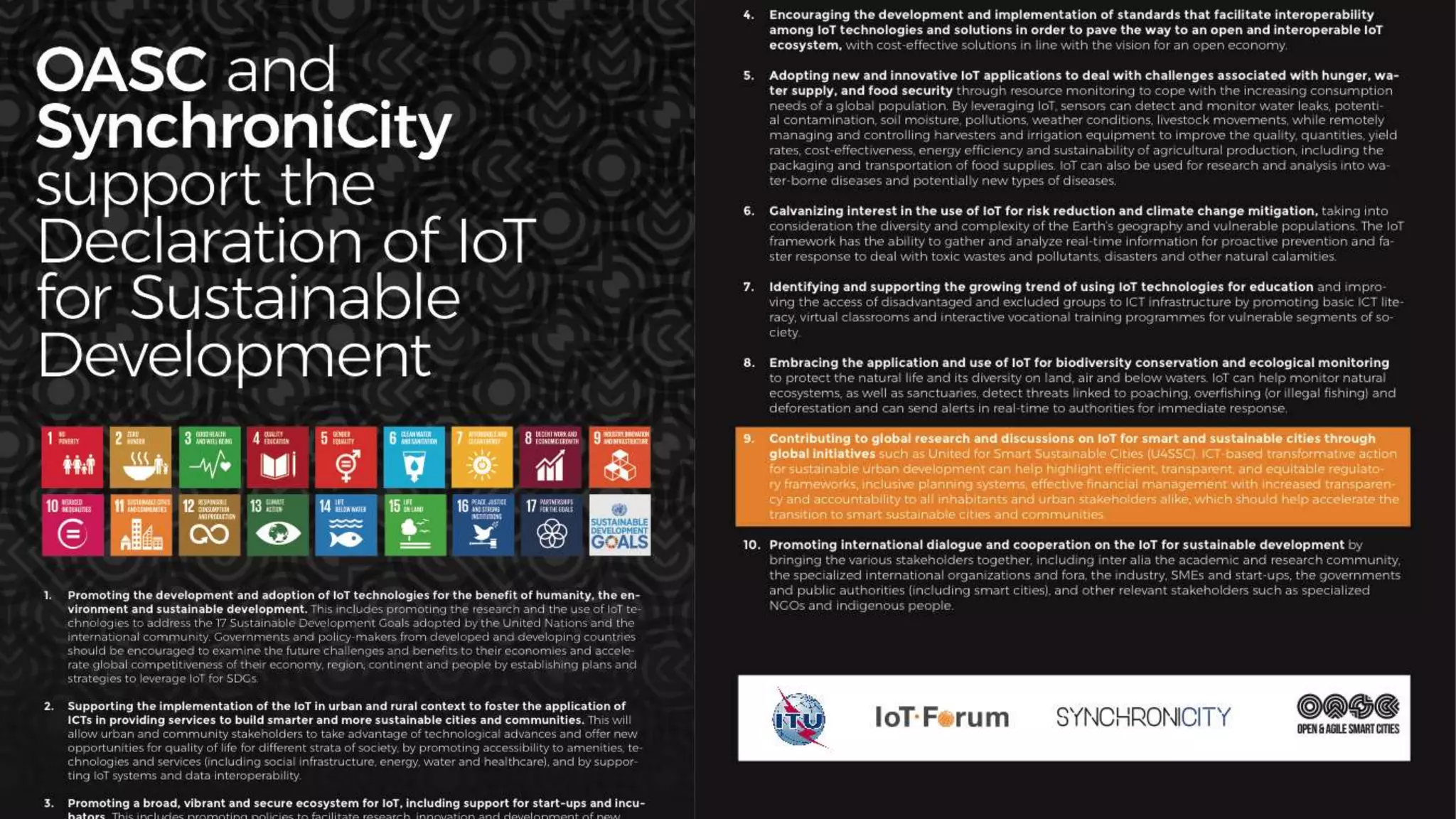
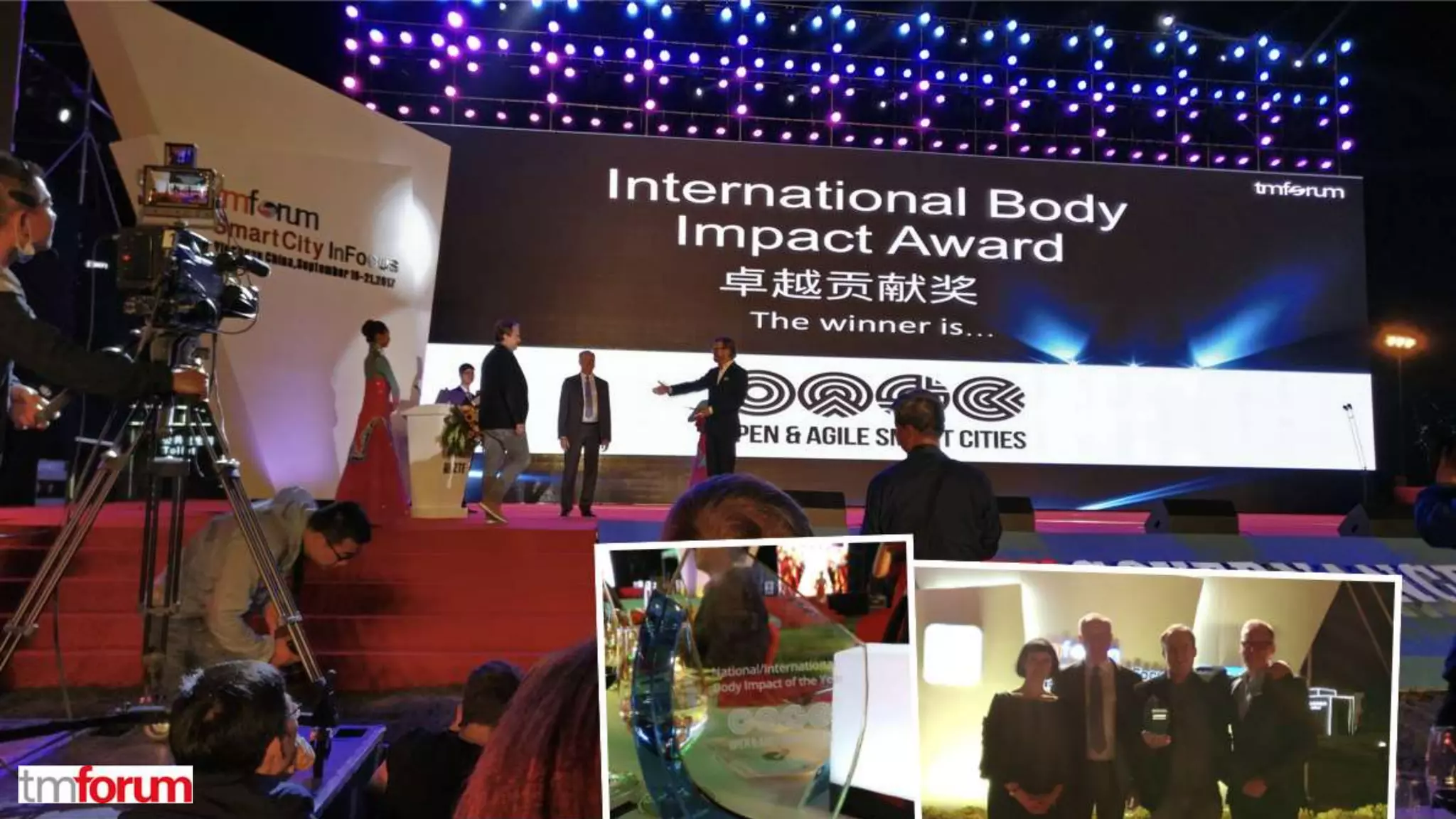
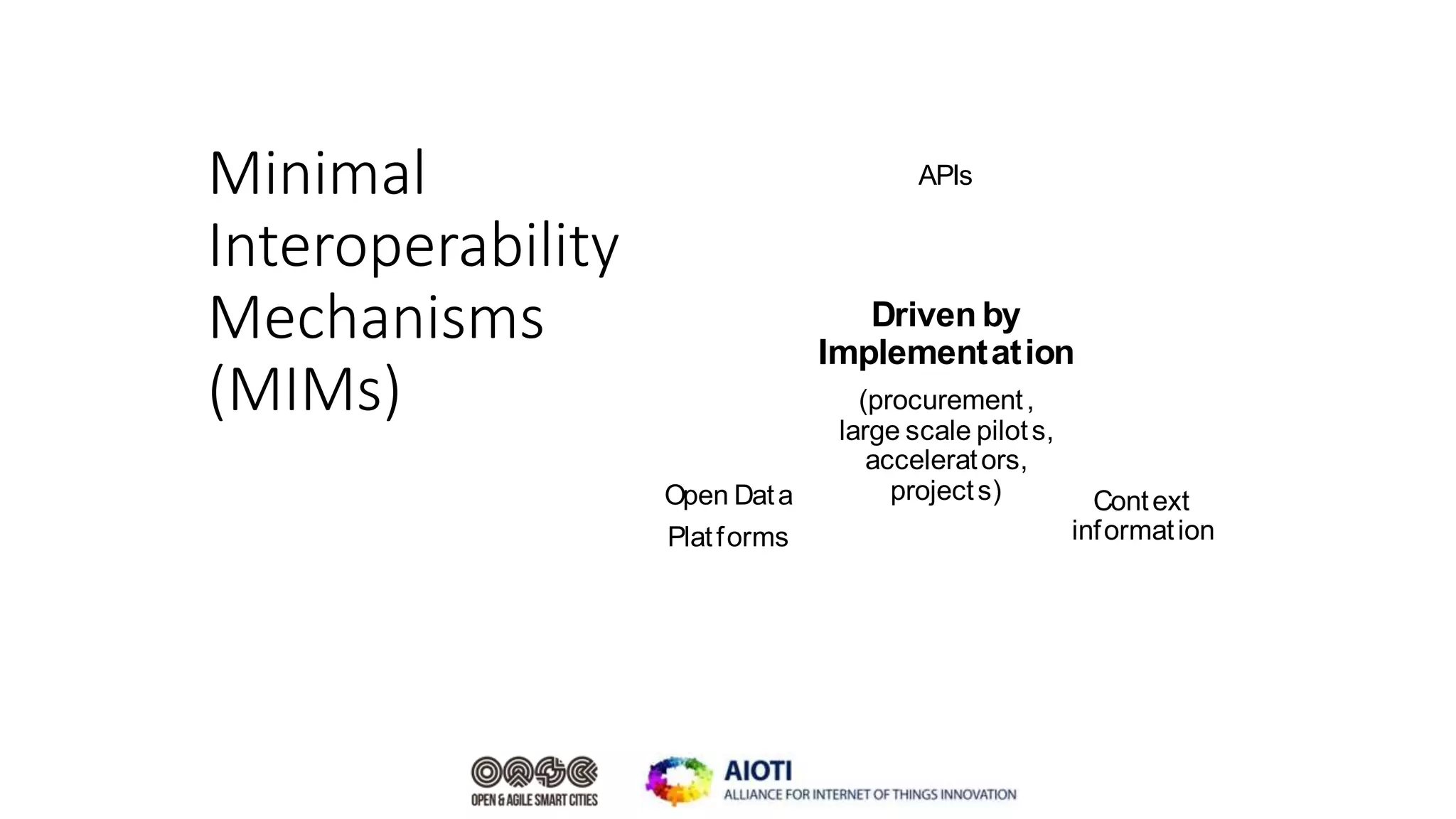
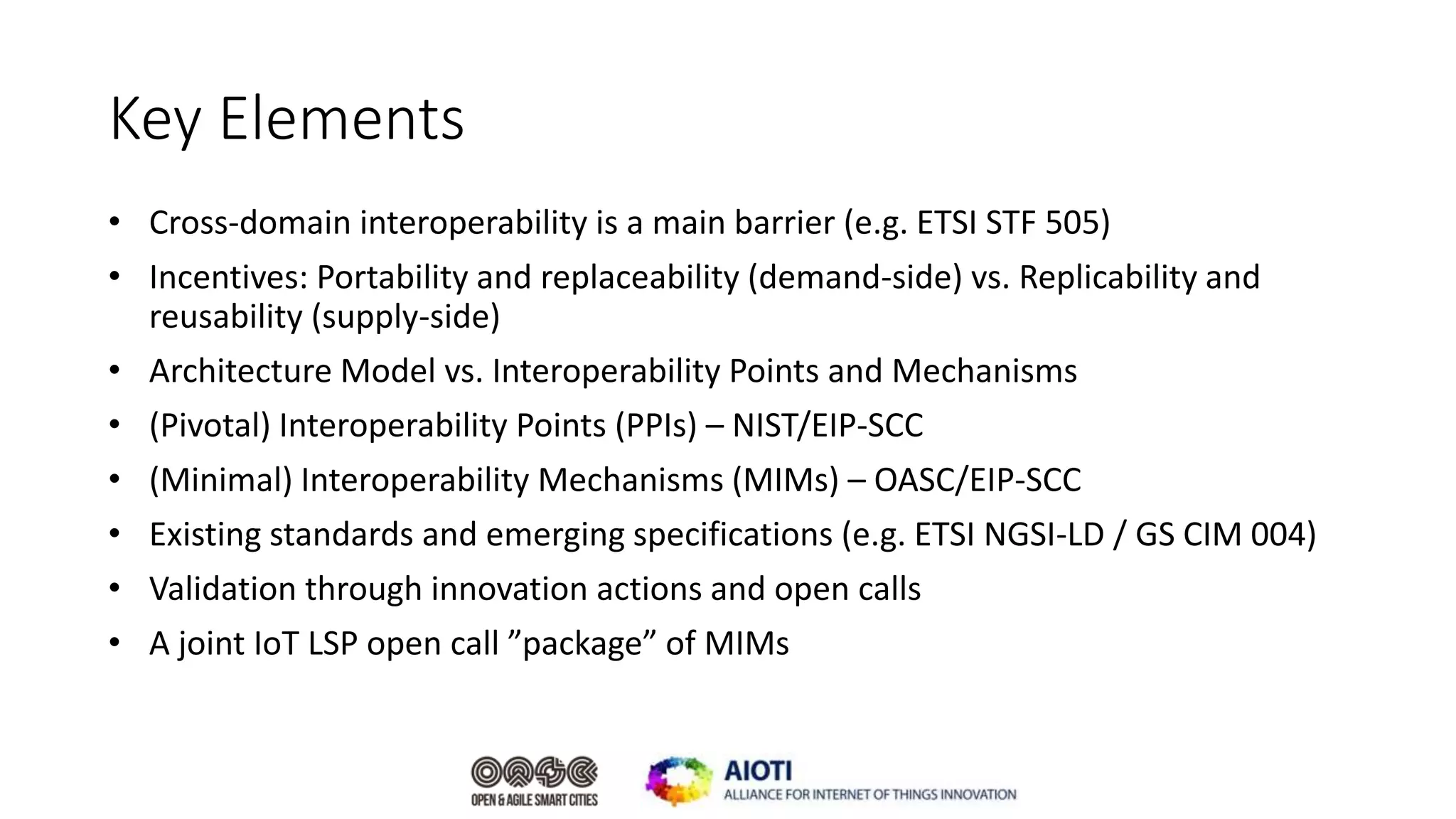
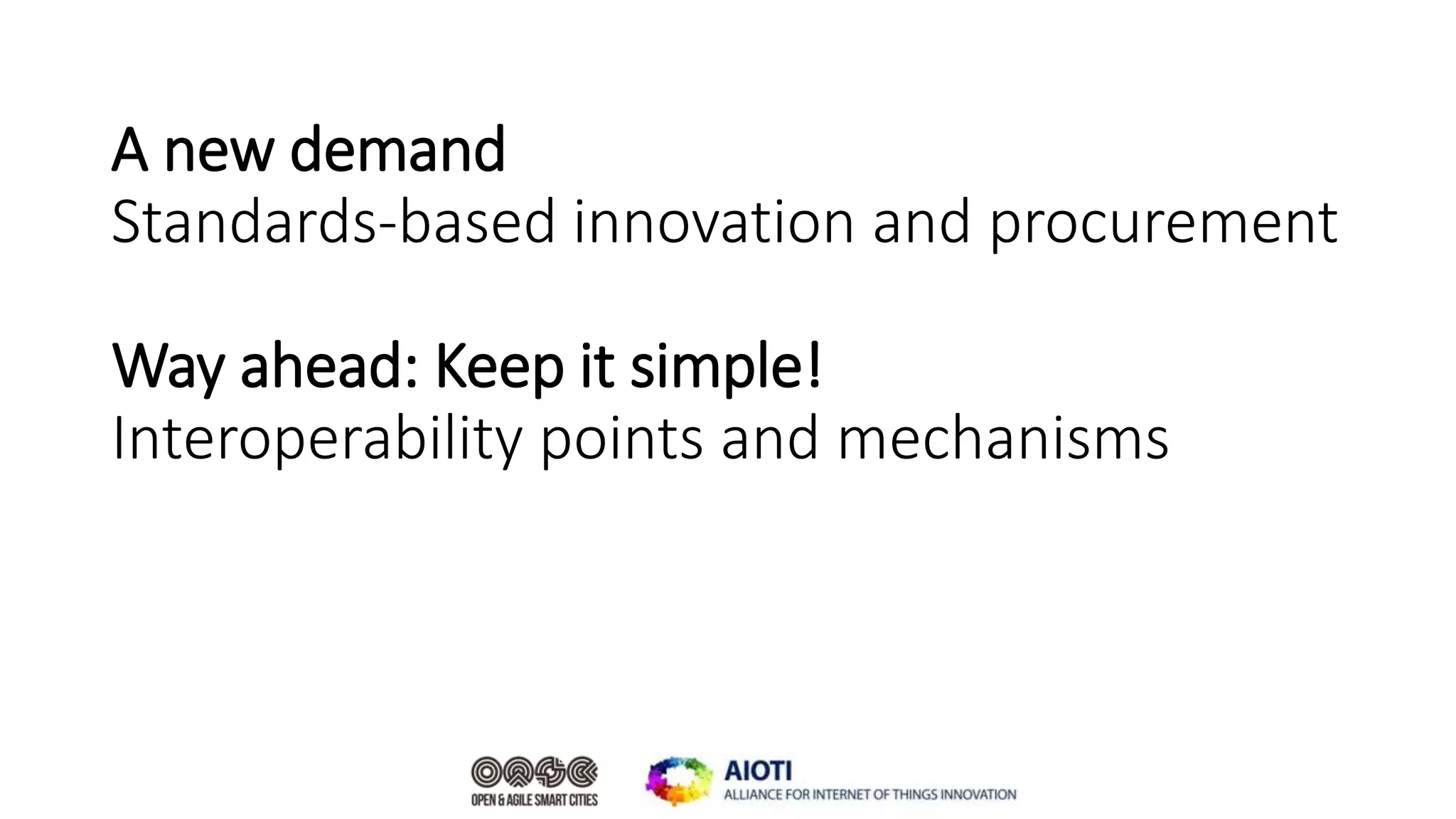
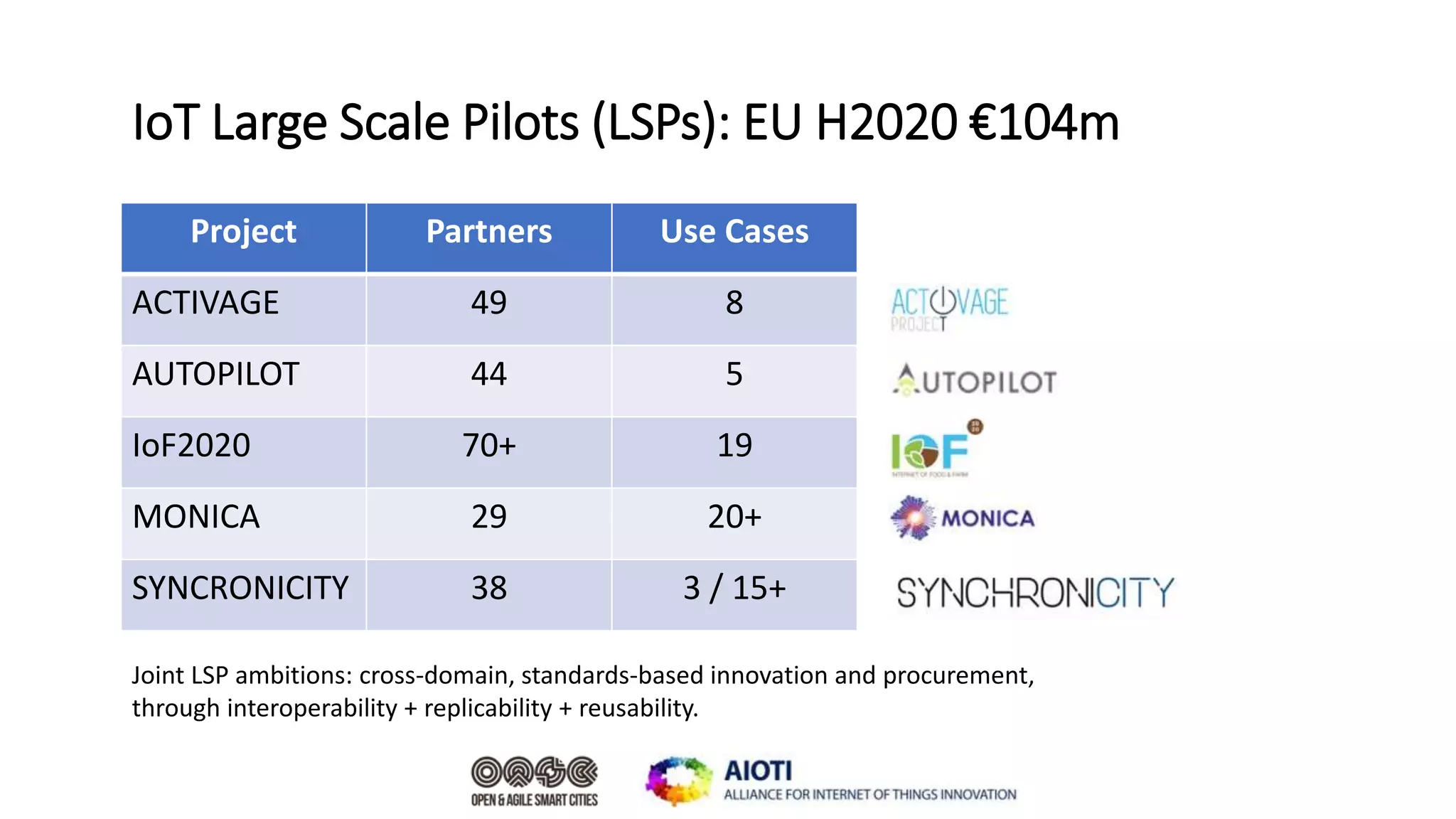
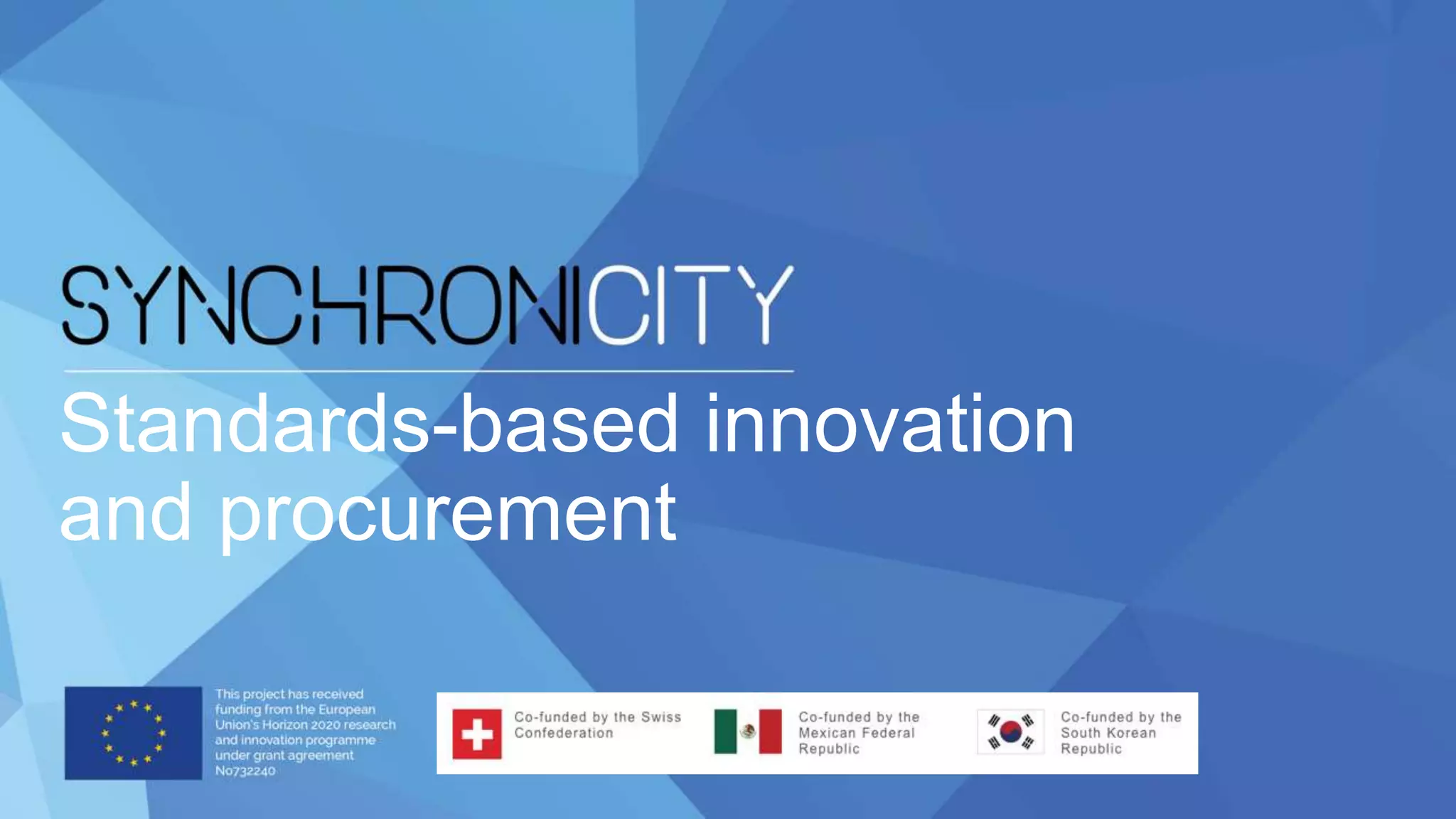
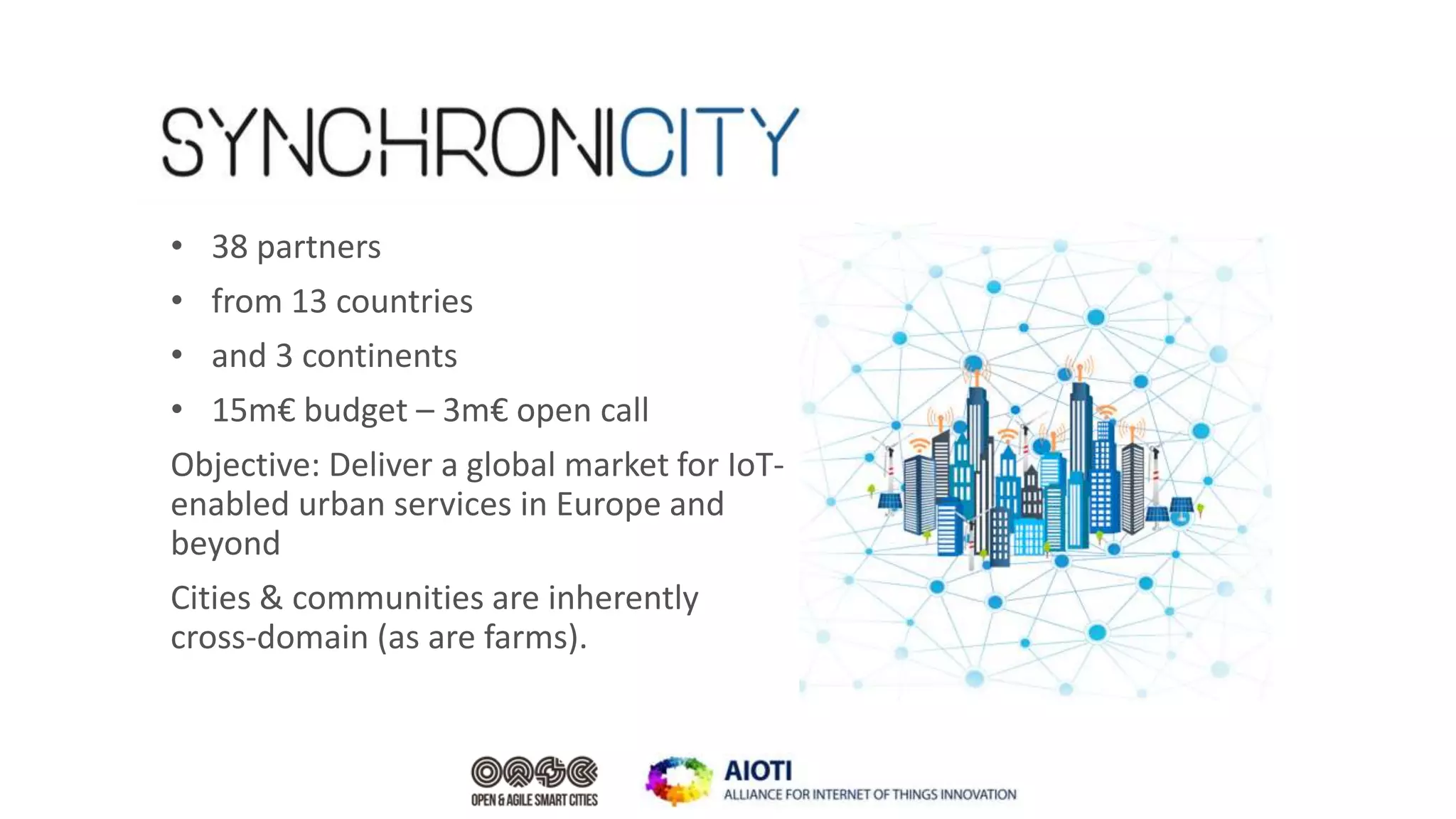
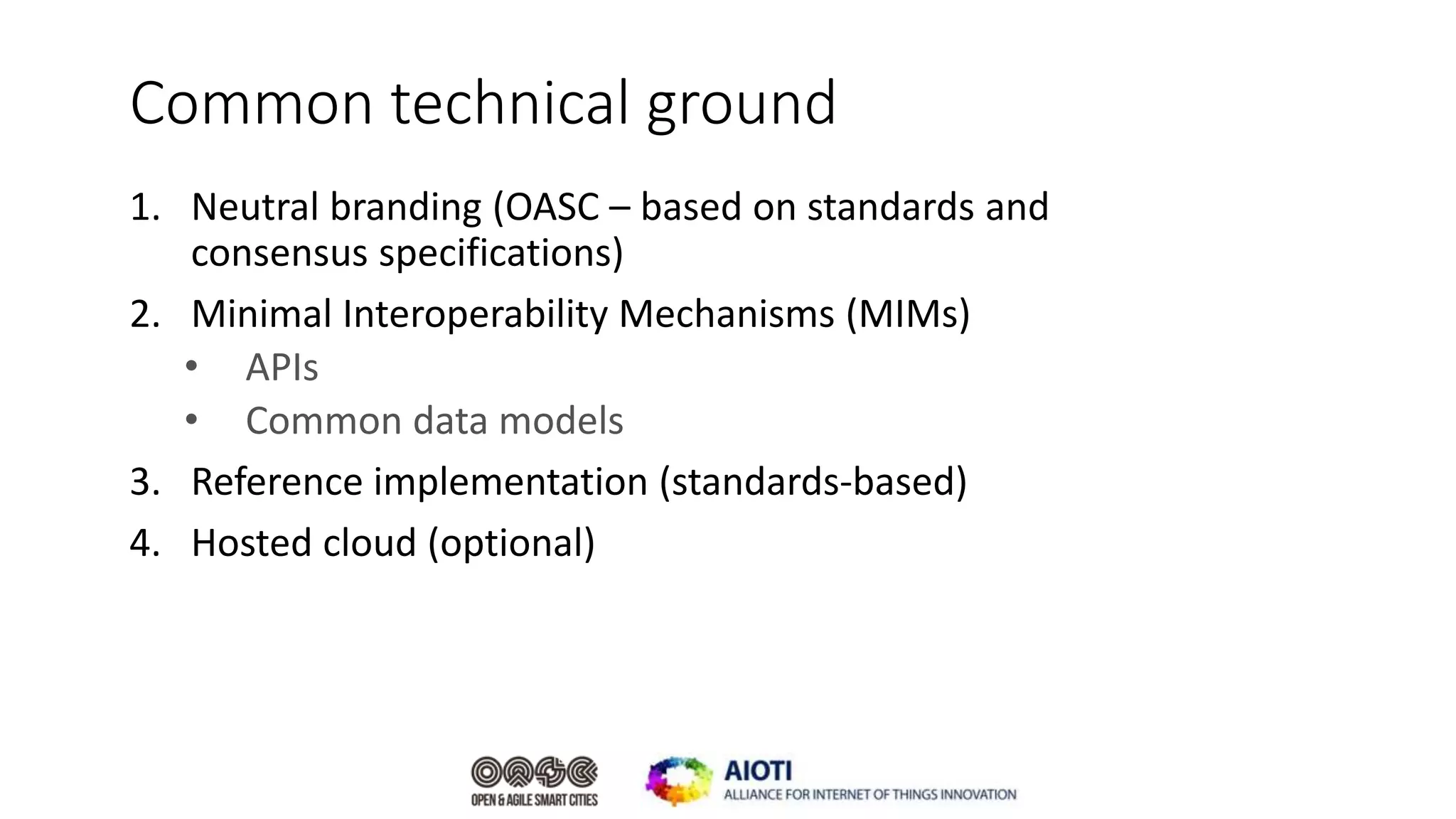
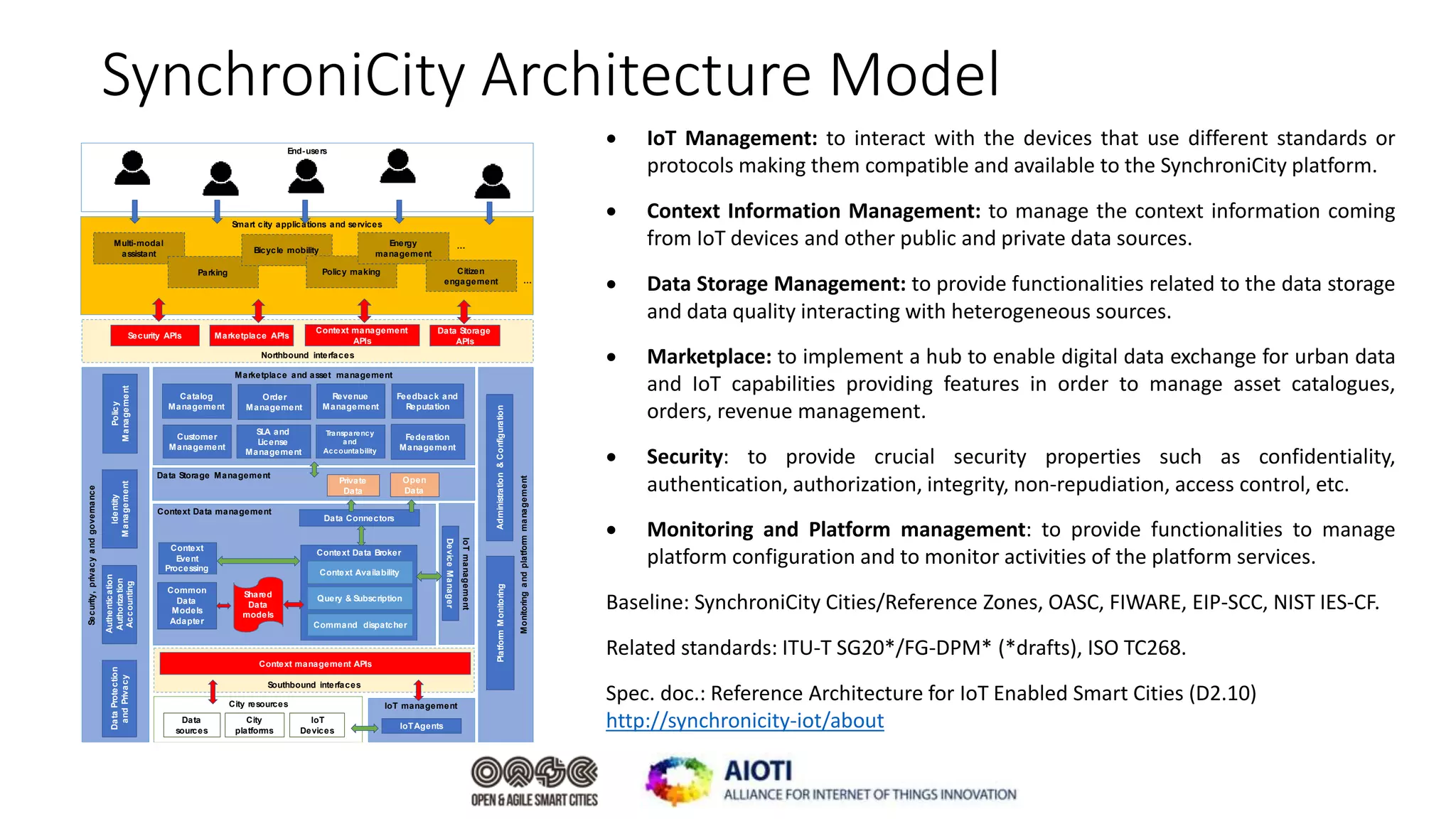
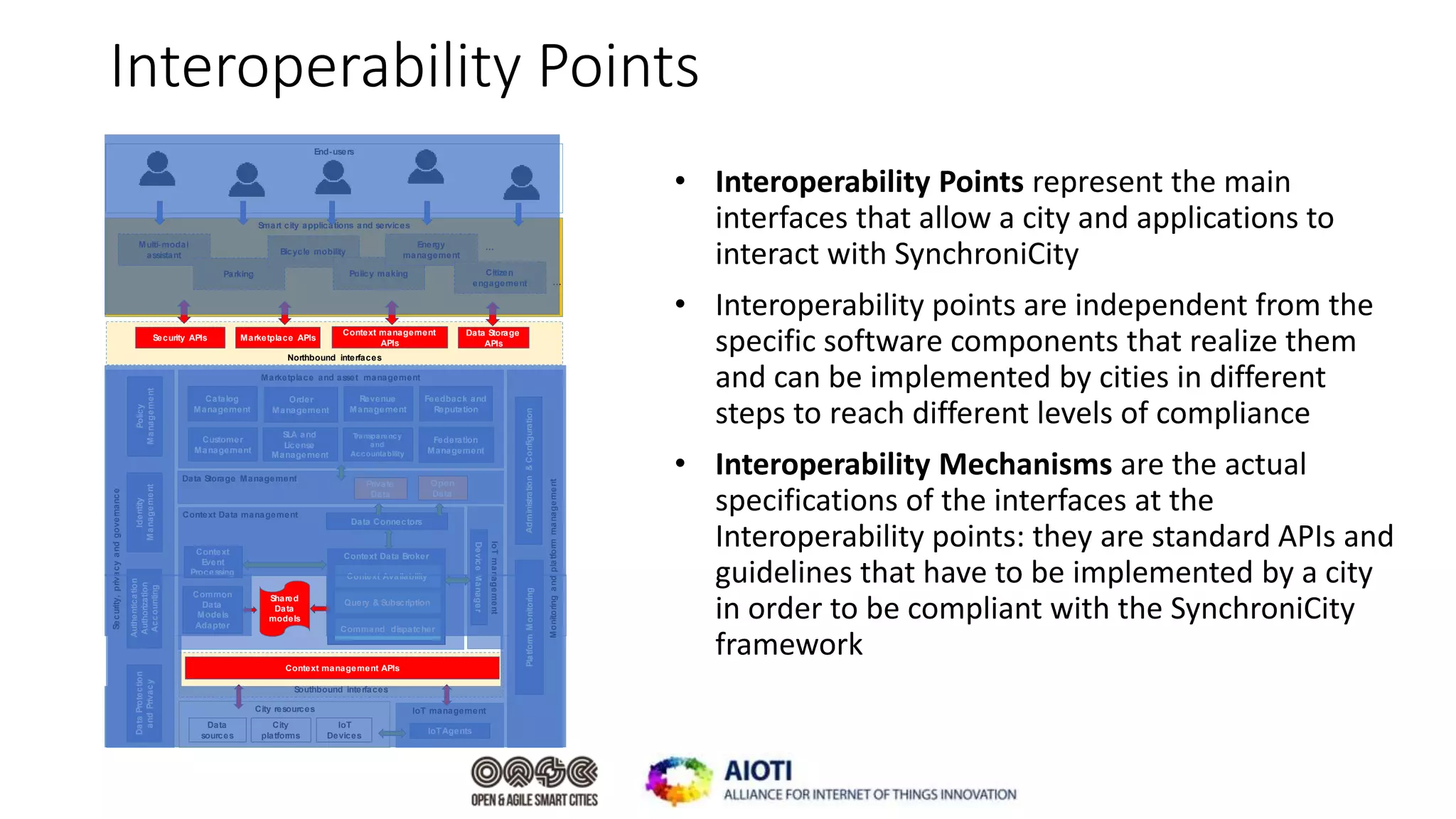
![Interoperability Mechanisms
Interoperability
Point
Description Specification document
(synchronicity-iot.eu/about)
Related Standards
[and Baselines]
Context
Management API
This API allow to access to real-time context
information from the different cities.
Reference Architecture for IoT Enabled
Smart Cities (D2.10)
ETSI NGSI-LD prelim
API, OMA NGSI, ITU-
T SG20*/FG-DPM*
Shared data models
Guidelines and catalogue of common data
models in different verticals to enable
interoperability for applications and systems
among different cities
Guidelines for the definition of OASC
Shared Data Models (D2.2)
Catalogue of OASC Shared Data
Models for Smart City domains (D2.3)
[SynchroniCity RZ +
partner data models]
Marketplace API
It exposes functionalities such as catalogue
management, ordering management,
revenue management, SLA, license
management etc.
Basic Data Marketplace Enablers
(D2.4)
Guidelines for the integration of IoT
devices in OASC compliant platforms
(D2.6)
[TM Forum API]
Security API
API to register and authenticate user and
applications in order to access to the
SynchroniCity-enabled services.
Reference Architecture for IoT Enabled
Smart Cities (D2.10)
OAuth2
Data Storage API
This API allows to access to historical data
and open data of the reference zones.
Reference Architecture for IoT Enabled
Smart Cities (D2.10)
ETSI NGSI-LD,
DCAT-AP [CKAN]](https://image.slidesharecdn.com/why-commercially-viable-cross-domain-use-cases-will-drive-innovation-and-horizontalizationfinal-180529080724/75/Why-commercially-viable-cross-domain-use-cases-will-drive-innovation-and-horizontalization-of-IoT-enabled-smart-cities-51-2048.jpg)
